Updated: November 26, 2025
By Santorini Dave • dave@santorinidave.com
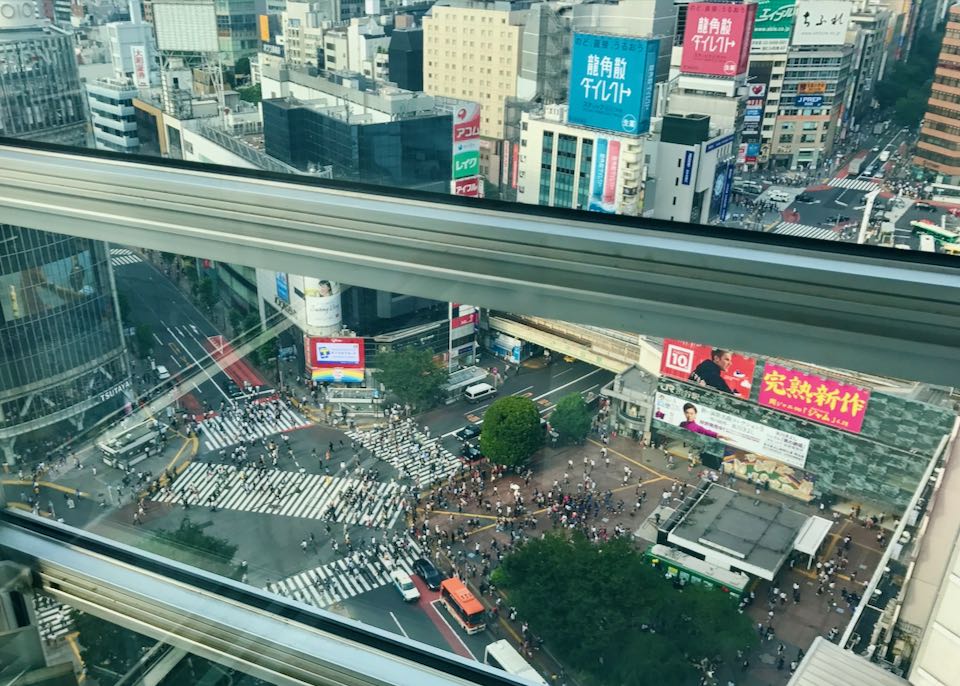
The view of Shibuya and the Shibuya train station (on the right) from our stay at the Shibuya Granbell Hotel.
The Best Areas to Stay in Tokyo
My Favorite Hotels in Tokyo
- 5-Star: Four Seasons Marunouchi
- 4-Star: Shibuya Stream
- 3-Star: Sunroute Plaza Shinjuku
- For Families: Saunaland Asakusa
- For Couples: TRUNK (Hotel)
- Best Pool: Grand Hyatt
- Tokyo Station: Tokyo Station Hotel
- Disney Resort: Hilton Tokyo Bay
My wife and I at the Shibuya Scramble in Tokyo.
Tokyo is one of my favorite cities in the world. Great food, fantastic sights and attractions, and a pulsing energy. It’s a megacity like few others. Thankfully for first-time visitors, widespread use of English signage and numerous online resources make it far easier today to navigate Tokyo’s massive but efficient public transport system, and the boom in budget and midrange hotels has made it more affordable than ever before.
The city is modern by Asian standards. Formerly known as “Edo”, it only developed as a major port and city after Shogun Tokugawa Ieyasu established his capital here in 1603. Tokyo was leveled by the Great Kanto Earthquake in 1923, and again by Allied bombing in 1945; in stark contrast to Kyoto, which is full of ancient streets, temples, and palaces, anything built in Tokyo before the 1960s is considered old. Though there are few globally famous attractions – Asakusa’s Sensō-jiTemple, the Shinjuku Gyoen National Garden, the Meiji Shrine, and Tokyo Skytree are considered its premier sights – Tokyo is an endlessly fascinating 24-hour city, where you can buy just about anything and eat at some of the most celebrated restaurants on the planet.
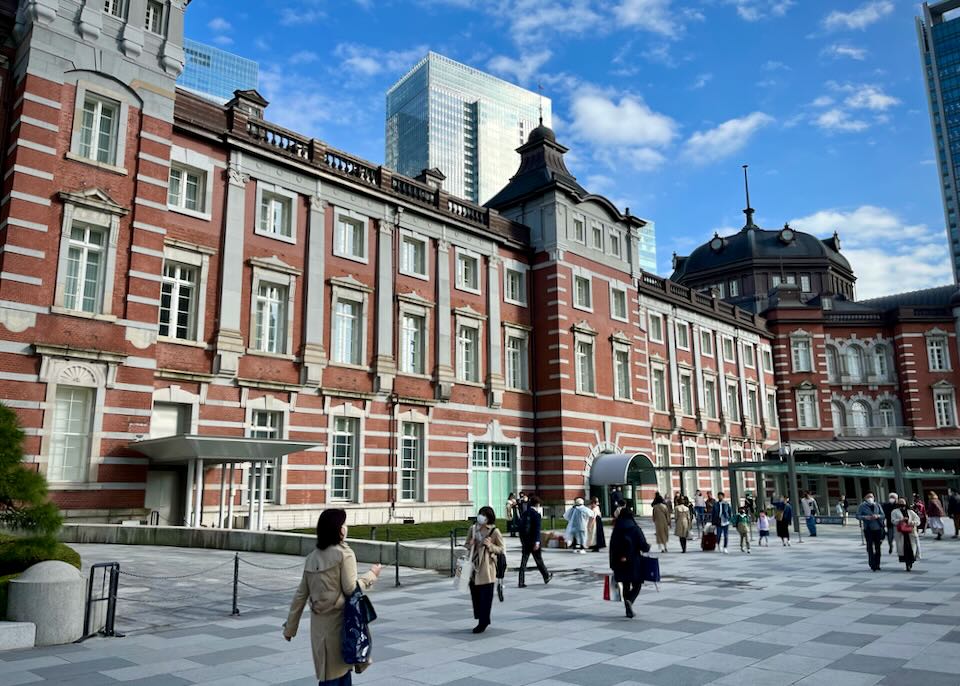
The iconic Tokyo Station Hotel located inside the Tokyo Train Station and with direct indoor access to subways, JR trains, and the Shinkansen.
Tokyo Station is often the first stop for visitors to Tokyo whether they’re arriving from Narita airport or by Shinkansen. Here are some good hotels within a short walk of the station:
Tokyo Station Hotel • Four Seasons Marunouchi • Shangri-La • Courtyard Tokyo Station • Mandarin Oriental • Mitsui Garden Kyobashi
Tokyo Neighborhoods
Because Tokyo’s best hotels and best attractions are scattered all over the city and public transportation is so efficient, no one neighborhood stands out as the best place to stay. The districts surrounding the Imperial Palace and Tokyo Station form the traditional city center or downtown, but today the city boundaries extend much further, and its most helpful to think of Tokyo as a vast patchwork of neighborhoods with their own personalities and advantages – make your choice of home base based on preference, lifestyle, or general interests.
At the heart of Tokyo lies the Imperial Palace; with nearby Tokyo Station and the Marunouchi and Ginza neighborhoods forming the traditional downtown, offering luxury shopping and decent nightlife. The infamous Yasukuni Shrine stands just to the northwest.
Our suite (the Deluxe One-Bedroom) at the Four Seasons Marunouchi. Great location near Ginza, good restaurants, great shopping, and directly connected to Tokyo Station. I absolutely love this hotel. A great place to stay for first-time visitors to Tokyo. (It’s currently be refurbished and closed until mid-2026.)
To the north lies Akihabara (aka “Akihabara Electric Town”), a hub for all things high-tech and “otaku” (cosplay, anime, and manga). Beyond here are the shrines, museums, and major zoo in Ueno; Tokyo National Museum in particular boasts the city’s best collection of ancient Japanese art and artifacts, while the National Museum of Nature and Science is the best interactive museum for kids. To the east of Ueno lies Asakusa, Tokyo’s most historic district, anchored by the spectacular Sensō-jiTemple. Over the river further east looms Tokyo Skytree, Japan’s tallest structure.
To the west of Tokyo Station are the central districts of often-overlooked Akasaka and stylish Roppongi, home to some of Tokyo’s newest (and tallest) developments. Roppongi is especially noted for its galleries (like the Mori Art Museum and NationalArt Center) and foreigner-friendly nightlife. Just to the east of Roppongi lies the iconic Tokyo Tower.
The far west side of the city center is home to fashionable shopping districts of Shibuya and Harajuku, but also the Meiji Shrine, Tokyo’s biggest and most prestigious Shinto place of worship. Shinjuku is the city’s second major commercial center, home to skyscrapers, department stores, and a massive nightlife district (Kabukichō). The Shinjuku Gyoen National Garden and Tokyo Metropolitan Government Building (with Observation Deck) are two of the city’s most popular attractions.
Out in the harbor, the reclaimed islands of Tokyo Bay are a popular destination for families, with a spread of fun attractions that include the immersive teamLab Planets Tokyo, the Tokyo Big Sight international exhibition center, the futuristic Fuji TV Building, Gundam Base toy store with its massive Gundam statue, Legoland Discovery Center, and Madam Tussauds Tokyo. There’s also the National Museum of Emerging Science and Innovation (aka Miraikan), the Tokyo Sea Life Park aquarium, and finally Tokyo Disney, perched at the far eastern end of the bay.
The Peninsula Hotel is located directly beside a subway station.
Tokyo Transportation
Despite its intimidating size, getting around Tokyo is easy, efficient, and inexpensive. The city’s transportation system is one of the best and most extensive in the world. The Japan Railways (JR) Yamanote Line is a circular loop that passes through many of the city’s most popular wards and neighborhoods, including Tokyo Station, Akihabara, Ueno, Shinjuku, Harajuku, Shibuya and many others. Most of Tokyo’s major attractions are near or within this Yamanote Line loop.
There are also 13 subway lines, each assigned its own color and letter (for example, the Ginza Line is orange and is identified by G). Furthermore, each station along each line is numbered in chronological order, so if you board the Ginza Line in Omotesandō (G 02), it’s easy to keep track of how many stations you’ll pass before reaching Asakusa (G 19). Various travel day passes are available and are usually a good deal if you intend to do a lot of sightseeing.
Don’t rent a car in Tokyo. Parking is expensive, roads are often congested, and driving is confusing for first timers. Public transportation is excellent in Tokyo and the subway will take you within walking distance of almost every attraction.
The Best Places to Stay in Tokyo
- Best Luxury Hotels in Tokyo
Four Seasons Marunouchi • Mandarin Oriental • Park Hyatt Tokyo • The Peninsula • Shangri-La • Hotel Gajoen Tokyo • Tokyo Station Hotel- Best Boutique Hotels in Tokyo
Andaz • TRUNK • Shibuya Stream Hotel- Best Ryokans in Tokyo
Kaminarimon Ryokan • Hoshinoya • Ryokan Asakusa Shigetsu- Best Cheap/Midrange Hotels in Tokyo
Sunroute Plaza Shinjuku • Tokyu Stay Shibuya- Best Hotels for Families in Tokyo
Asakusa View • Rose Garden Shinjuku- Best hotels near Tokyo Station
Tokyo Station Hotel • Four Seasons Marunouchi • Shangri-La- Good hotels near Shibuya Station
Shibuya Stream Hotel • Shibuya Hotel Tokyu • Shibuya Granbell- Good hotel near Shinjuku Station
Hotel Groove Shinjuku • Sunroute Plaza Shinjuku
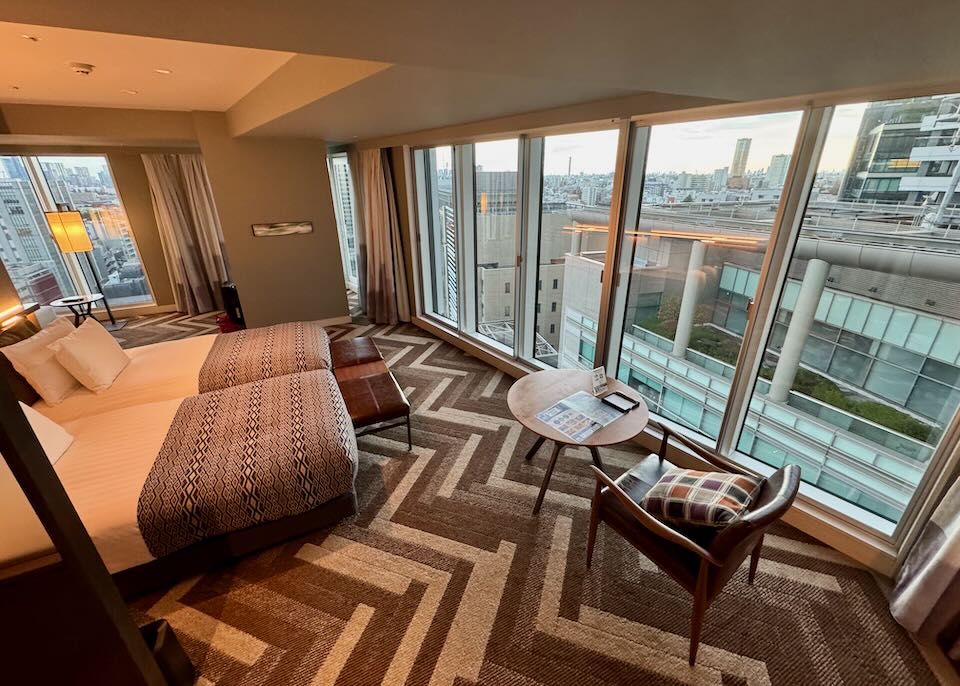
Our suite at the Shibuya Stream Hotel.
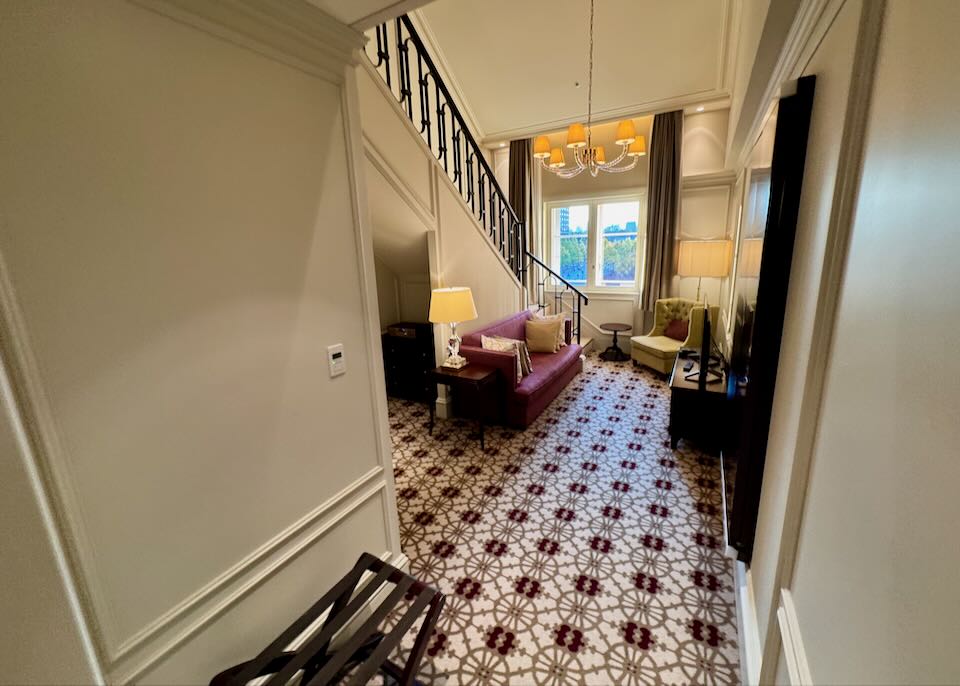
Our suite at the Tokyo Station Hotel.
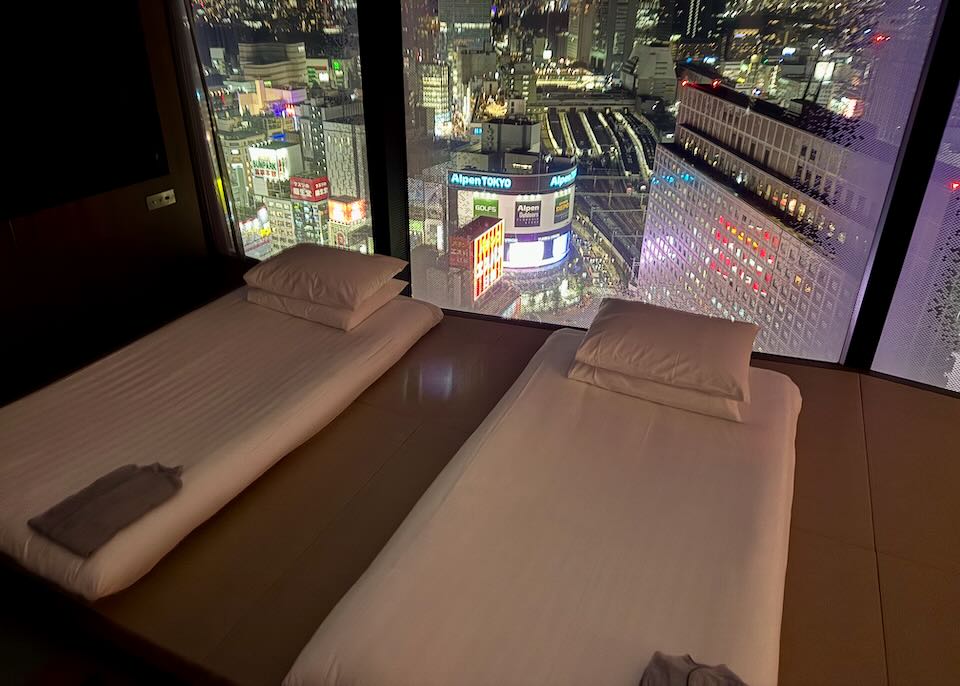
Our suite (a traditional Japanese room) at Hotel Groove Shinjuku.
Best Areas in Tokyo for…
- Best Areas for First-Timers: Shibuya and Shinjuku
Shibuya and Shinjuku are two of the best areas for first-time visitors to Tokyo due to their central locations, vibrant atmosphere, and excellent transportation links. Both neighborhoods showcase the city’s unique blend of tradition and modernity, making them ideal for experiencing Tokyo’s dynamic urban landscape.Shibuya is a bustling district famous for its iconic pedestrian crossing, the Shibuya Scramble, which symbolizes the energetic and fast-paced nature of Tokyo. The area is a shopping and entertainment hub, with numerous department stores, boutiques, and restaurants catering to various tastes and budgets. Shibuya is also known for its nightlife, offering a wide range of bars, clubs, and entertainment venues. The area is well-connected to the rest of the city via Shibuya Station, which serves multiple train and subway lines, making it easy to explore other parts of Tokyo.
Shinjuku, on the other hand, is a lively district that offers a mix of shopping, dining, and entertainment options. It is home to the world’s busiest railway station, Shinjuku Station, which provides convenient access to other areas of Tokyo and the greater Kanto region via multiple train and subway lines. Major attractions in Shinjuku include the Tokyo Metropolitan Government Building with its free observation decks, the expansive Shinjuku Gyoen National Garden, and the vibrant nightlife district of Kabukicho.
Both Shibuya and Shinjuku provide a diverse range of accommodation options, from luxury hotels to budget-friendly guesthouses and hostels, making them suitable for travelers with different budgets. A few of our favorite hotels for first-timers are Shibuya Stream Hotel, TRUNK, Shibuya Excel Hotel Tokyu, Tokyu Stay Shibuya, Sunroute Plaza Shinjuku, Hotel Gracery, and Hotel Groove Shinjuku.
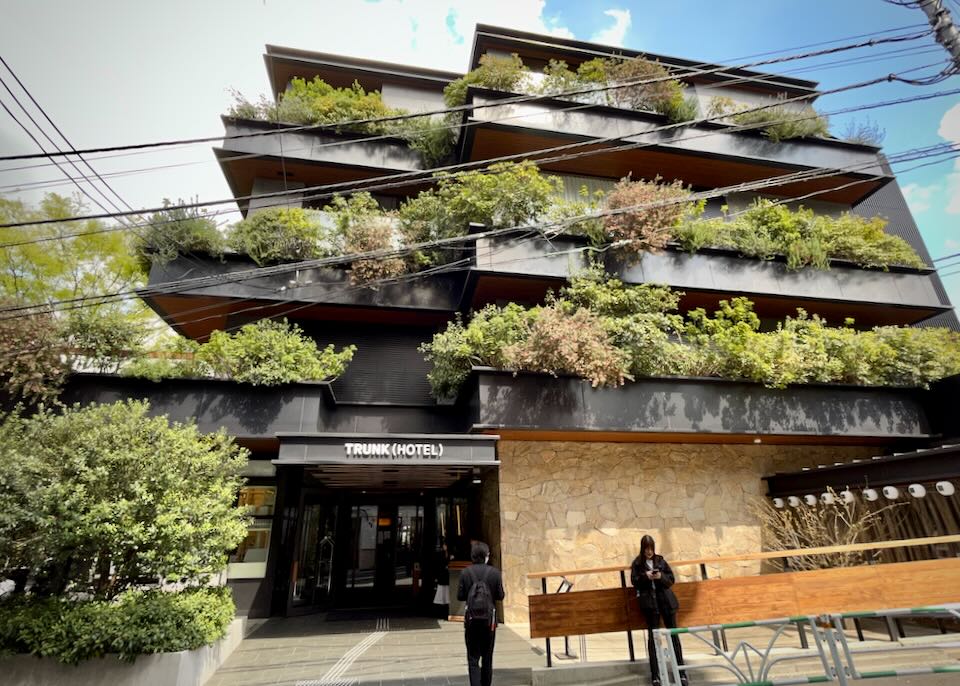
TRUNK Hotel in Shibuya, one of the best areas of Tokyo for first-time visitors.
- Best Neighborhoods in Tokyo for Budget Accommodation: Asakusa/Ueno and Shinjuku/Shibuya
Tokyo hotels can be expensive, though the stock of midrange and budget options has vastly increased in recent years. For cheaper rooms, and especially hostels (dorms and private rooms), look at Asakusa and Ueno in the north – both areas offer lots of character and plenty of attractions. For midrange and budget hotels you’ll find the biggest stock in Shibuya and Shinjuku to the east, both lively and fashionable hubs for entertainment and shopping. Quality tends to vary, but Rose Garden and Sunroute Plaza in Shinjuku are solid choices – we list more options below.- Best Neighborhoods in Tokyo for Shopping and Fashion: Shibuya/Harajuku
Shibuya, Omotesandō, and Harajuku – all within walking distance of each other – are some of Tokyo’s most popular weekend hangouts. Omotesandō is the name of a subway station and tree-shaded avenue lined with designer boutiques that connects the two distinct micro-neighborhoods of Harajuku, with its youth-centered shops and cheap eateries, and upscale Aoyama, filled with designer stores and innovative restaurants. Places to stay are few in Omotesandō, but nearby Shibuya has 4-star and 5-star hotels and luxury shopping malls, and is connected to Harajuku via pedestrian Cat Street or a short subway ride.For electronics, anime, manga and contemporary Japanese pop culture, Akihabara is ground zero for the whole country – this is where the cosplay “maid café” trend began and where the biggest tech emporiums can be found.
For traditional Japanese crafts shops, Asakusa is a good bet: visit Fujiya for hand-painted cotton towels (tenugui), Kaneso for hand-crafted knives, scissors, and shears; and the Yonoya Comb Store (Yonoya Kushiho) for handmade boxwood combs and hair decorations.
- Best Neighborhoods in Tokyo for Nightlife: Roppongi and Shinjuku
If you’re a night owl who likes staying close to the action, Roppongi offers Tokyo’s most cosmopolitan yet condensed nightlife, packed with bars, izakaya, and restaurants offering everything from yakitori and sushi to pizza and loads of international cuisines. Popular spots include the BrewDog craft beer hall (a joint venture between the UK craft brewer and Asahi), Cask Strength (known for rare whiskey), Gen Yamamoto for craft cocktails, Jazz House ALFIE, and A-Life for late night clubbing.The Shinjuku district is larger and crazier, with strip shows, hostess bars, izakaya, karaoke bars, dance clubs, and live music venues; concentrated mostly in a nightlife district called Kabukichō. Nearby is Golden Gai, a maze of narrow streets lined with tiny bars, while farther afield is 2 Chome Shinjuku , Asia’s largest LGBT nightlife district. Shinjuku Pit Inn is one of the city’s top jazz venues, though dance clubs and live band venues tend to be better in nearby Shibuya: Club Asia, Harlem, and Womb are top choices.
Note that most trains stop running around midnight in Tokyo, so if you intend to party a lot, staying in Roppongi and Shinjuku will save you a lot of money in taxi fares.
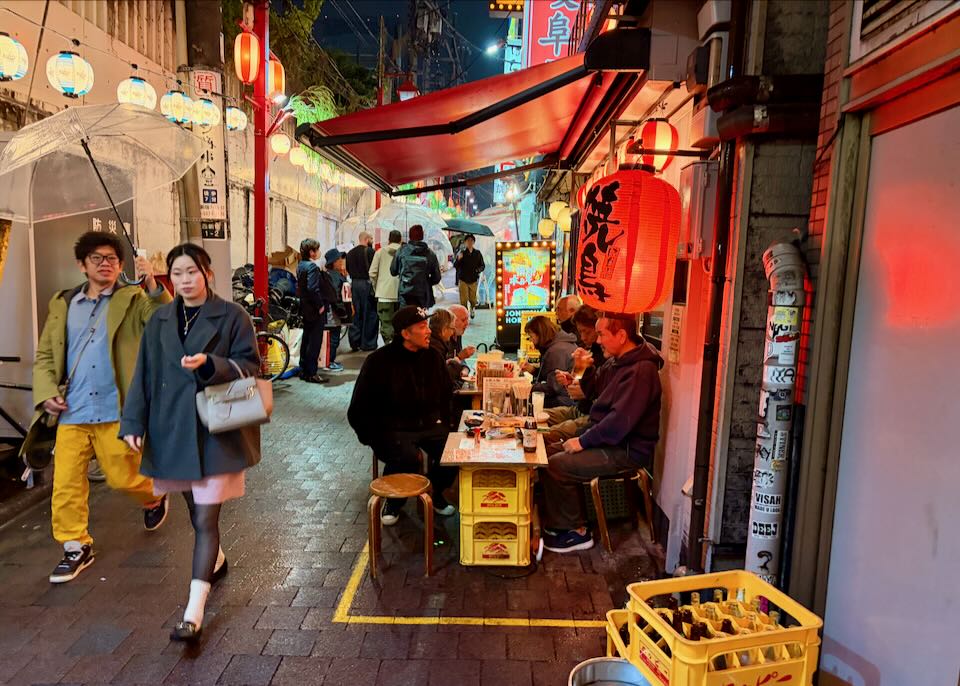
Shinjuku’s Omoide Yokochō, a picturesque alley of traditional izakayas.
- Most Historic Neighborhood in Tokyo: Asakusa
Asakusa imparts the atmosphere of old Edo better than any other area of Tokyo. If Old World Tokyo is what you’re after, this is the neighborhood. Asakusa’s Sensō-ji Temple, in fact, predates Tokyo by more than 1,300 years, and there are many souvenir shops and traditional restaurants in the quaint surrounding side streets that have been passed down from generation to generation. For an even more authentic immersion into old Tokyo, stay in one of many traditional Japanese inns in Asakusa or nearby Ueno.- Best Neighborhood in Tokyo for Food & Restaurants: Ginza
Tokyo is one of the world’s great foodie destinations; if you like ramen and sushi, you’re in for a treat. There are fantastic restaurants all over the city, but in general the best places can be found around Shibuya, Shinjuku, Harajuku, and especially Ginza. Ginza is famous for not only high-end shopping, but also for its restaurants. Foodies will find restaurants ranging from deluxe venues offering haute French fare to those specializing in fusion dishes. There are also cubby-hole-size izakaya (Japanese-style pubs), sophisticated cocktail lounges, and everything in between. Ginza is also the place to go for famous shops offering Japanese desserts, sake, and other items, not to mention department stores with must-see basement food emporiums known as “depachika” (Tokyo Station itself features a massive underground food hall (Gransta), plus Ekibenya Matsuri, offering over 150 regional “ekiben” or station bento boxes).Top of a very long list is tiny Ginza Ichibun for sushi (reservations essential), Tempura Kondo for fresh seafood tempura, Ginza Kagari Main Branch for ramen, Higashiya Ginza for traditional Japanese sweets (“wagashi”) and green tea, Ginza Shinohara for the celebrated kaiseki menus of Chef Takemasa Shinohara, and posh French restaurant Esquisse. It’s also worth visiting Cafe de l’Ambre, a classic “kissaten” (traditional coffee shop) open since 1948. The food court at Ginza Mitsukoshi department store is also worth exploring, and Henri Charpentier Ginza Store is an enticing destination for dessert.
Tsukiji’s famous wholesale market moved to Toyosu in 2018, but the “Tsukiji Outer Market” (just 10 minutes from Ginza by subway), a warren of seafood restaurants and local bars, is still a fun place to eat sushi or ramen; Tsukiji Itadori Bekkan is a great choice for the former.
In Tokyo, be prepared to wait in line to eat. Many popular spots are small, casual affairs that do not take reservations; you’ll have to put your name down and wait to be called in (or arrive at opening time).
Eating at one of my favorite (inexpensive) restaurants in Tokyo, Yamachan. Highly recommended.
- Most Romantic Neighborhood in Tokyo: Ebisu
You don’t want to be fighting crowds on a honeymoon or couples’ vacation, making overlooked Ebisu a convenient (it’s on the Yamanote and Hibiya lines, among others), quiet, and charming choice. Although there are plenty of wining and dining choices along Ebisu’s side streets, Tokyoites often choose Yebisu Garden Place mall as one of the city’s top date spots. A city-within-a-city with an iconic glass arch, its offerings include restaurants with dreamy views on the 38th and 39th floors of Yebisu Garden Place Tower, a beer hall (that commemorates the birthplace of Sapporo’s “Yebisu” brand beer), Mitsukoshi department store, a weekly outdoor farmer’s market, and a luxurious Westin hotel. The stylish Tokyo Photographic Art Museum is also here, and it’s a short walk to the Meguro River Promenade, famed for its spectacular cherry blossoms in the spring. Winter (Nov–Dec) is also a romantic time to visit, as Yebisu Garden Place features special illuminations at night, including the world’s biggest Baccarat chandelier. Top spot for dinner dates is the Joël Robuchon Restaurant, housed in what looks like a French château, while lantern-lined Ebisu Yokocho is a narrow, covered alley full of atmospheric bars and food stalls. Ebisu is also within walking distance of the fashionable Nakameguro and Daikanyama neighborhoods. The best Hotels in Ebisu are the Westin Tokyo and Ebisuholic Hotel- Best Neighborhood in Tokyo for Short Visits: Around Tokyo Station (Marunouchi & Ginza)
If you have only a day or two to spare, you don’t want to waste time dragging your luggage across town. Convenient for Narita airport and the Shinkansen bullet train, Tokyo Station contains shops, restaurants, and even a hotel, but it’s also within walking distance of the Imperial Palace, the Ginza, and Kitanomaru Park, home to the impressive National Museum of Modern Art. Access to the rest of the city is via Tokyo Station’s Yamanote and Marunouchi lines and four additional subway lines from nearby Ōtemachi Station.
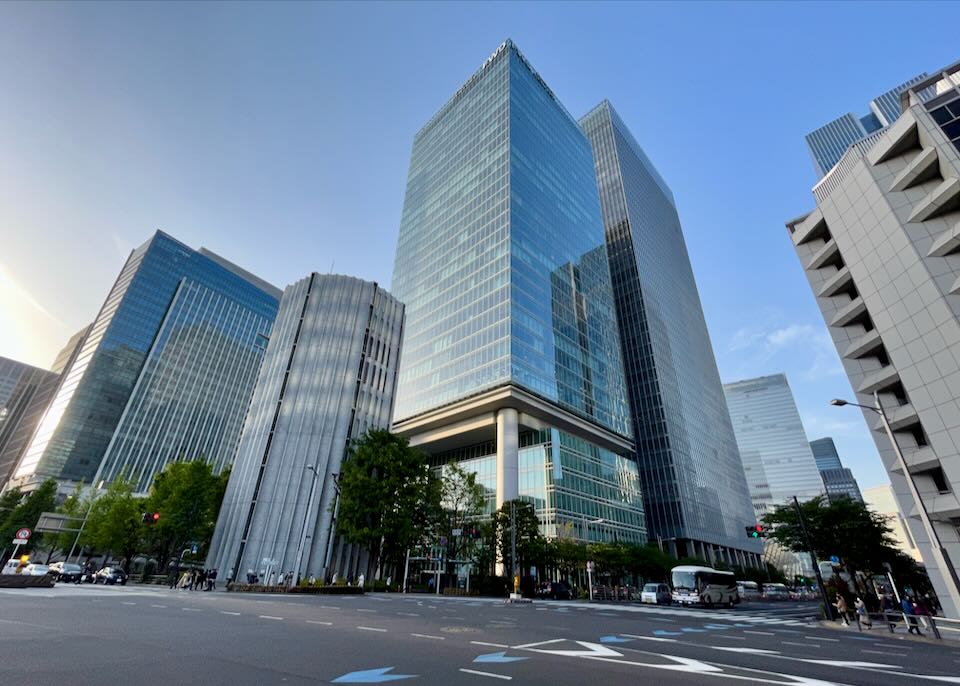
The amazing Four Seasons Hotel at Marunouchi.
- Best Neighborhoods in Tokyo for Sightseeing: Akasaka or Around Tokyo Station (Marunouchi & Ginza)
Akasaka, home to many corporate headquarters, has few attractions of its own other than the Hie Shrine, the National Diet Building, the Akasaka Sacas shopping and dining complex, and a small but lively nightlife scene. However, its central location and combined stations of Akasaka-Mitsuke and Nagatacho, with five subway lines, provide direct access to Asakusa, Ueno, Shibuya, Omotesandō, Ginza, Shinjuku and other top spots without having to change trains. Hotels are pricey, but many offer great views of the city.Otherwise, many visitors settle for the micro-neighborhoods around Tokyo Station – there are plenty of choices here (though this area also tends to be on the pricey side), with excellent transport connections across the city and to the airports, with a huge spread of restaurants, bars and shopping malls within walking distance.
The Meguro River promenade in cherry blossom season.
- Best Neighborhoods in Tokyo for a Local Vibe: Meguro or Shimokitazawa
If Tokyo’s density gives you pause, consider staying in the adjacent neighborhoods of Meguro, Nakameguro, and Daikanyama. Lying just outside the Yamanote Line’s demarcation of inner Tokyo but with quick access to Shibuya and Ebisu, Meguro is a mostly residential area with breathing space and a hipster vibe. Few tourists make it down here, though it’s popular with local Japanese on weekends and the Tokyo Metropolitan Teien Art Museum hosts high-quality changing art exhibitions in a former royal villa. The pleasant Meguro River Promenade, smothered in pink cherry blossom in the spring, links Meguro with the hip Nakameguro neighborhood a bit further north (check out work of local artists at Meguro Museum of Art on route).Around Nakameguro Station you’ll find stylish coffee shops, vintage clothing stores and boutiques, as well as the incredibly stylish Sato Sakura Museum, with its exhibitions of Japanese art. Equally fashionable Daikanyama lies on the hill just north of Nakameguro and the river, with Tsutaya Books Daikan-yama a destination in its own right – a huge, contemporary bookstore and a hub of outdoor cafes and restaurants. From here you can stroll along Esperanza-dōri to Log Road Daikanyama, a small shopping mall on an old railway line and another local café hub (Spring Valley Brewery Tokyo is also here).
The best hotels in Meguro are Hotel Gajoen and Meguroholic. Hotel Gajoen is the best Japanese-style luxury hotel in Tokyo – its amazing interior is worth a visit even for non-guests, with the “One Hundred Steps Staircase” gallery beautifully decorated and the only remaining wooden building from the original 1935 hotel (it’s literally a 99-step staircase, painted in an ancient Japanese style).
Further west, a few stops from Shibuya, Shimokitazawa is another trendy neighborhood that makes for a refreshing, low-rise break from frenetic central Tokyo. It’s a charming district with a village-like feel, vintage clothing stores, record shops, galleries, live music venues, and independent cafés. The Honda Theater hosts cutting-edge plays (usually in Japanese only), while Oishii Curry and Bagel cafe 88 are cozy places to grab a bite. At Shimokita Senrogai, a short walk along the tracks north of Shimo-Kitazawa Station, you’ll find a hub of food and drink trucks, with special events held most weekends.
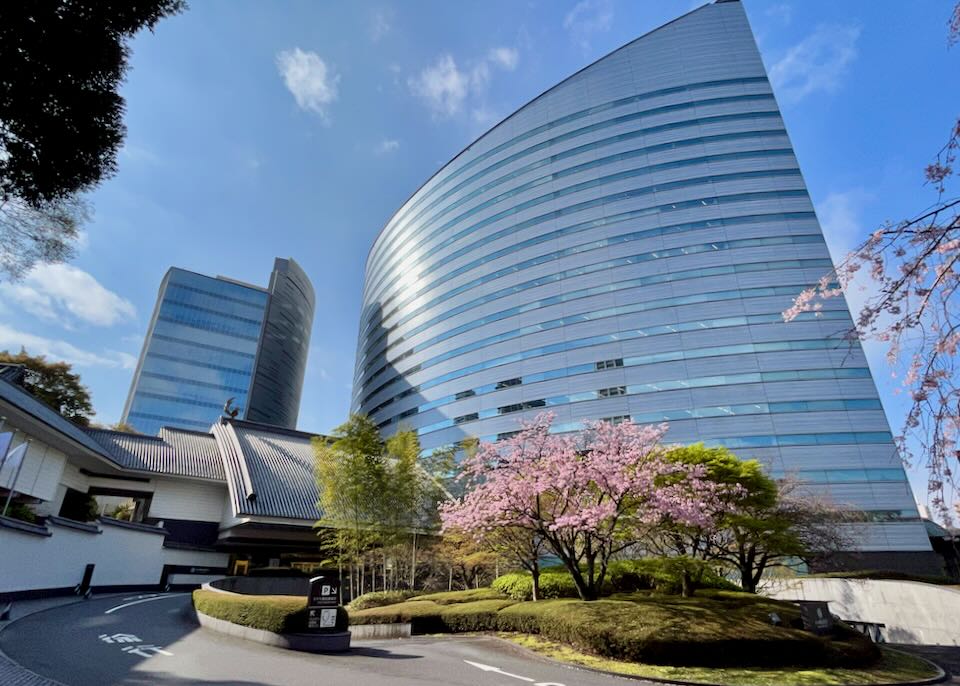
Hotel Gajoen in Meguro.
- Best Neighborhood in Tokyo for Families: Tokyo Bay (including Odaiba)
No area has more to offer families than the reclaimed islands in Tokyo Bay, with plenty of space to roam, great parks, and even a few beaches. Its diversions include Miraikan—National Museum of Emerging Science and Innovation with hands-on displays relating to the future of technology; huge entertainment complexes like Tokyo Joypolis game center and Small Worlds Tokyo “miniature theme park”; and both a Legoland and Madame Tussauds wax museum. There are also many shopping malls packed with restaurants and a Gundam Base toy store with its massive Gundam statue. More entertainment lies a few miles east: Kasai-Rinkai Park contains the giant Diamond and Flower Ferris Wheel and Tokyo Sea Life Park aquarium, and is one train stop away from Tokyo Disneyland, Japan’s most visited theme park.The downside to staying in Tokyo Bay is that access to the rest of Tokyo is limited. Shibuya is a good area for families if they want to be right in the thick of the Tokyo scene.
- Safety in Tokyo
Like most of urban Japan, Tokyo is very safe, though the usual precautions should be taken at night.
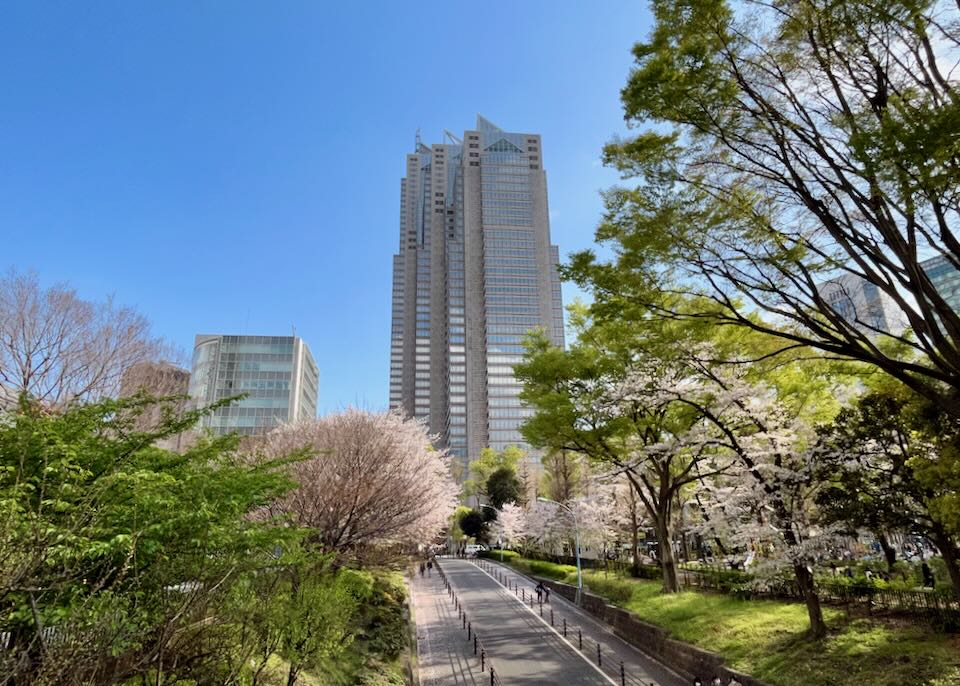
The beautiful Park Hyatt in Shinjuku, where much of the film Lost in Translation was filmed.
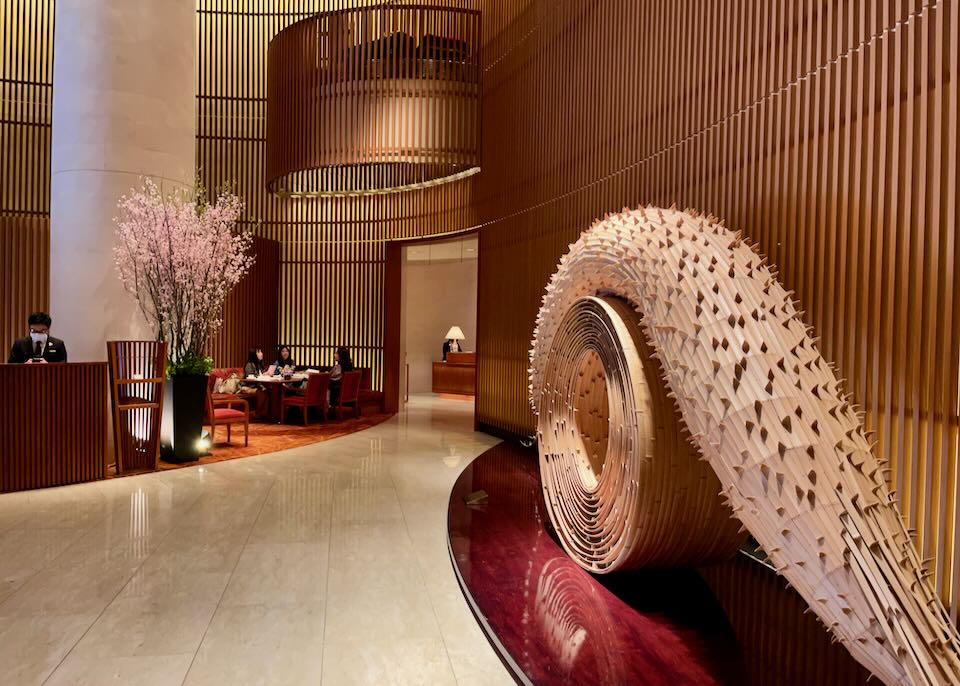
The beautiful lobby of the Peninsula Tokyo, just a few minutes walk from the Ginza shopping district.
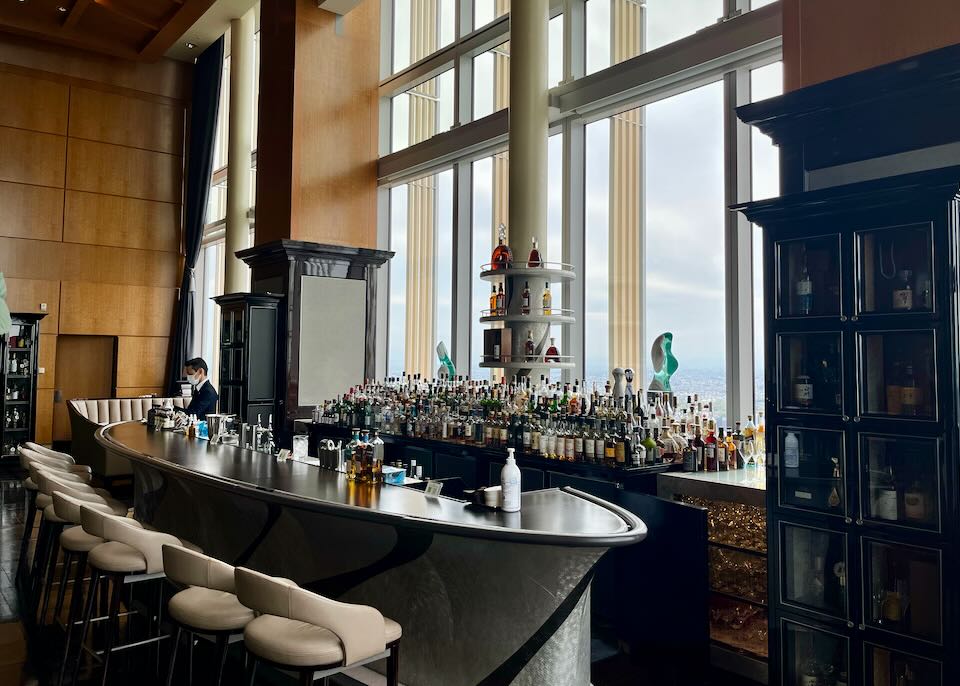
The Ritz-Carlton Hotel in Roppongi sits atop the 53-story Midtown Tower.
The 10 Best Neighborhoods in Tokyo for Tourists
1. Around Tokyo Station (Marunouchi & Ginza)
The area around Tokyo Station is the old “downtown” of the city, aka Shitamachi, and is the place where Edo (as Tokyo was once called) started to develop in the 17th century. This is where the Imperial Palace is located (the old Edo Castle), as well as the business district of Marunouchi and the posh shopping and entertainment district of Ginza. This area is a lot more sedate than hipper neighborhoods like Shinjuku and Shibuya, and a lot more upscale – some of the most luxurious hotels in the city are here – but it makes sense to base yourself here if you want to explore the city in full or be within walking distance of Tokyo Station (the main bullet train hub, and a Narita Express station).
As you’d expect, Tokyo Station itself is massive and can be initially confusing, though signage is translated into English and its layout is fairly logical, with shopping malls and food courts in the lower levels (“Tokyo Character Street” on Basement 1 is a favorite target for manga and anime fans).
The cluster of skyscrapers to the west of the station is Marunouchi, Tokyo’s premier financial district. (Japan’s largest bank, MUFG Bank, is headquartered here, with Mizuho Bank and SMBC nearby.) Marunouchi is also the home of the Mitsubishi Ichigokan Museum (showing European art and recently reopened after major renovations), the grand Imperial Theatre, and the newer Tokyo International Forum expo center designed by Rafael Viñoly). Beyond here lies the vast expanse of the Kokyo Gaien National Garden and the Imperial Palace itself (home of Japanese emperors since 1868). Though it’s generally not possible to get in (or even see) the main buildings (destroyed in World War II and rebuilt in the 1960s), most visitors tramp through the outer gardens anyway, taking the classic photo of the Nijubashi Bridge, with the Fushimi-yagura tower behind it. Kitanomaru Park is located just to the north of the palace and is the site of the Nippon Budokan (Tokyo’s popular concert venue, opened in 1964 as the Olympic judo hall), the Science and Technology Museum, and the National Museum of Modern Art (displaying works by notable Japanese artists since the Meiji period).
North of Tokyo Station are the commercial quarters known as Ōtemachi and Nihonbashi, home of the Tokyo Stock Exchange and the stately 19th-century premises of the Bank of Japan. Nearby is the Mitsui Memorial Museum, housing a rare collection of ancient Japanese art and artifacts. Further north, Kanda-Jinbōchō is known for its used-book stores (aka Jimbōchō Book Town); Kitazawa has an excellent selection of English-language books.
Yoshikura Honten izakaya in Ginza.
Ginza lies south of Tokyo Station, best known today for its luxury department stores, fashion boutiques, and high-end restaurants and coffeeshops – all the posh international brands are here, from Gucci to Chanel. The Ginza is also still a big nightlife hub, though not as hip as Shinjuku and Roppongi. Highlights include the Seiko House Ginza Clock Tower, Mitsukoshi Ginza department store, and Nissan Crossing at the heart of the district (at the Ginza Yon-chōme crossing, where Chūō-dōri and Harumi-dōri meet); the Renzo Piano-designed “bubblewrap” Maison Hermès boutique and gallery; the newish Ginza Six shopping complex; the traditional Kabuki-za (kabuki theater); and Sukiyabashi Jiro, the restaurant featured in the 2011 documentary “Jiro Dreams of Sushi” about sushi master Jiro Ono, though it’s now virtually impossible to get a reservation. Chūō-dōri is closed to traffic at weekends from noon to 5pm.
To the west of Ginza lies Hibiya Park, opened in 1903 and still a tranquil oasis in the heart of the city. The Japan Sake and Shochu Information Center is just to the south of the park, a small expo room/bar that promotes Japan’s favorite spirits. You’ll also find lots of hotels in Yaesuto the east of Tokyo Station, a quieter area known for the modern Artizon Museum and its eclectic collection of Impressionists and European art.
Yasukuni Shrine
Yasukuni Shrine lies northwest of this central area, beautiful with cherry blossoms in spring, but an otherwise controversial Shinto place of worship. Founded in 1869, it commemorates those who died in the service of Japan, but now includes over 1,000 World War II war criminals (including 14 “A-class” like Hideki Tojo, secretly enshrined in 1978). The on-site Yushukan Museum contains all sorts of military hardware, including real Mitsubishi zero fighters, but expect a fairly one-sided view of Japan’s invasion of China and World War II.
The best thing about staying in this area is location: it’s literally the heart of Tokyo, with subway and train lines shooting out from the main train station like spokes on wheel. It’s not as hip or as lively at night as other neighborhoods, but you’ll still find plenty of great eating and drinking options. The views from the top of the area’s five-star hotels are magnificent, especially at night – it’s worth going up for a drink or meal even if you’re not a guest (the Mandarin Oriental is the most spectacular).
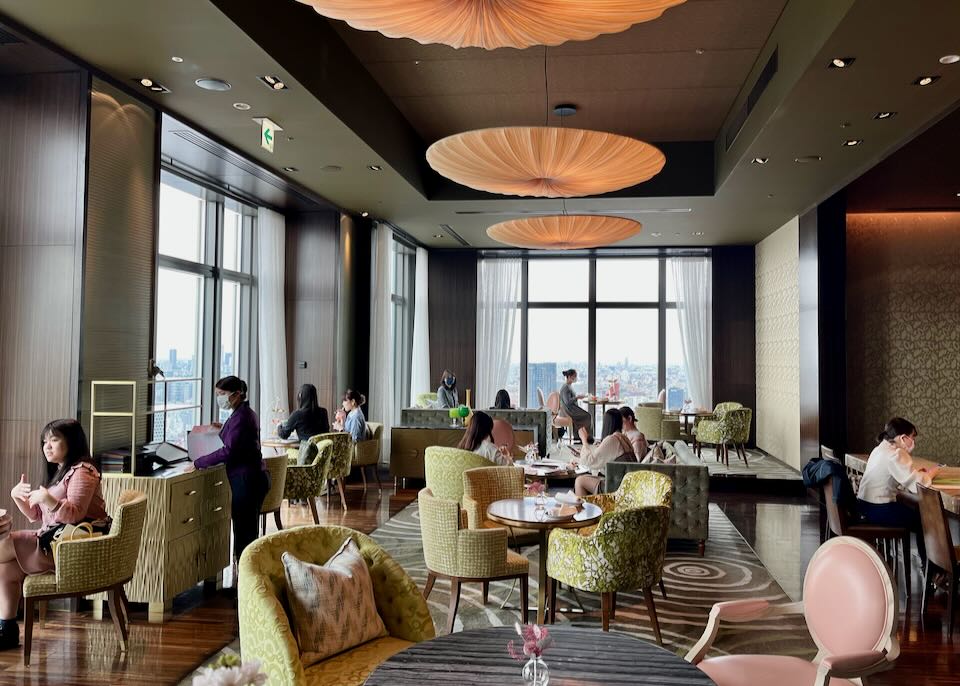
The elegant Mandarin Oriental in Nihonbashi.
- The Best Hotels Around Tokyo Station/Marunouchi
Tokyo Station Hotel • Hotel phone: +81 3-5220-1111
Four Seasons Marunouchi • Hotel phone: +81 3-5222-7222
Shangri-La • Hotel phone: +81 3-6739-7888
Courtyard Tokyo Station • Hotel phone: +81 3-3516-9600
Mandarin Oriental • Hotel phone: +81 3-3270-8800
Hoshinoya • Hotel phone: +81 50-3134-8091- The Best Hotels in Ginza & Hibiya
The Blossom Hibiya • Hotel phone: +81 3-3591-8702
The Celestine Ginza • Hotel phone: +81 3-3572-3111
Conrad • Hotel phone: +81 3-6388-8000
Imperial Hotel • Hotel phone: +81 3-3504-1111
The Peninsula • Hotel phone: +81 3-6270-2888- Best Cheap/Midrange Hotels
Hotel Sunroute Ginza • Hotel phone: +81 3-5579-9733
Quintessa Ginza • Hotel phone: +81 3-6264-1350
Super Hotel Premier Ginza • Hotel phone: +81 3-4411-9000- Best Hostel
Imano Ginza • Hotel phone: +81 3-5117-21312. Shinjuku
Home to Japan’s busiest commuter station, as well as some of the city’s tallest skyscrapers, top hotels, restaurants, bars, shops, and plenty of late-night entertainment, Shinjuku is Tokyo’s modern heart, rivaling the traditional city center in Marunouchi and Ginza, some 4 miles to the east. The station itself is surrounded by giant shopping malls and department stores like Takashimaya, while the warren of narrow streets northeast of the station is best known for nightlife. Omoide Yokochō is a touristy but atmospheric alley of izakayas and tiny dive bars, but the main entertainment area is Kabukichō, still home to sleazy hostess bars and strip clubs but a lot more mainstream since its 1980s and 1990s red-light and yakuza-run heyday. It’s best to see it at night (it’s known as “Sleepless Town,” as not much happens here during the day). Favorite photo spots include the red Kabukichō Ichiban-gai gate (along Yasukuni-dōri), and the Godzilla head on top of Hotel Gracery.
On the east side of Kabukichō lies Golden Gai, a warren of six narrow lanes lined with over 150 tiny shanty-style bars. It looks sketchy but it’s actually quite exclusive and attracts Tokyo’s artsy set (things don’t get going here ’til well after 9pm). A little further east Shinjuku Ni-chome (2 Chome) is Japan’s largest LGBTQ+ nightlife district. The premier daytime attraction over here is the vast green swathe of Shinjuku Gyoen National Garden. This huge park is always busy, with several picturesque ponds, blossoming flowers year-round, giant tulip trees, and sensitively designed tea houses. There’s also a very photogenic Chinese pavilion (Kyu-Goryo-Tei or Taiwan Pavilion), a futuristic greenhouse crammed with tropical flora, and the stylish Shinjuku Gyoen Museum which chronicles the park’s history as the estate of a Tokugawa-era nobleman. To the north of Kabukichō lies Shin-Okubo, Tokyo’s most vibrant Koreatown, packed with food stalls, markets, karaoke bars, and Korean barbecue restaurants.
Nishi-Shinjuku, the modern skyscraper-studded area west of Shinjuku Station, is home to the striking Mode Gakuen Cocoon Tower, with its curved crisscross design, the distinctive twin towers of the Tokyo Metropolitan Government Building (with a popular observation deck), laidback Shinjuku Chuo Park, and adjacent Shinjuku Jyuniso Kumano Shrine. The Park Hyatt (at the top of the iconic Shinjuku Tower) was where much of 2003 movie Lost in Translation was filmed and remains one of the best hotels in the city; relive scenes from the movie at the New York Bar (New York Grill during the day) on the 52nd floor, or visit the bamboo-laden Peak Lounge & Bar on the 41st floor for similarly spectacular views.
Shinjuku is Tokyo at its most intense, ideal for experiencing the city’s best nightlife, dining, and shopping scenes, with good transport links to other parts of the city.
- Best Hotels in Shinjuku
Hotel Groove Shinjuku • Hotel phone: +81 3-6233-8888
Odakyu Century Southern Tower • Hotel phone: +81 3-5354-0111
Hotel Gracery Shinjuku • Hotel phone: +81 3-6833-1111
Park Hyatt Tokyo • Hotel phone: +81 3-5322-1234- Best Cheap/Midrange Hotels
Rose Garden Shinjuku • Hotel phone: +81 3-3360-1533
Sunroute Plaza Shinjuku • Hotel phone: +81 3-3375-3211
Super Hotel Shinjuku Kabukicho • Hotel phone: +81 3-6855-9000
UNPLAN Shinjuku • Hotel phone: +81 3-6384-12973. Shibuya
One of Tokyo’s most important commuter hubs, Shibuya is a more contemporary, more stylish version of Shinjuku, some 2 miles (3.5km) to the north. It boasts a lively restaurant and nightlife scene catering mostly to students, young office workers, and professionals, but is perhaps best known for the Shibuya Scramble Crossing, the “world’s busiest pedestrian crossing” just outside the station, made famous in the film Lost in Translation. The nearby Hachikō Memorial Statue recalls the faithful dog that continued to wait at Shibuya Station for 9 years after his master’s death in 1925, while the Shibuya Sky observation deck offers 360-degree open-air views that are wildly popular with Instagrammers.
Otherwise, there isn’t a tone of top level attractions – the area is best known for shopping: the Shibuya 109 mall is a showcase for current Japanese fashion, while nearby Center Gai street is packed with indie stores. There’s also a MEGA Don Quijote store, branches of Parco and Tokyu Hands malls, a popular Shibuya Loft, the new Shibuya Stream mall and Shibuya Fukuras mall. Fashionable Cat Street runs north to Harajuku, lined with cool shops and cafes.
- Best Hotels in Shibuya
TRUNK • Hotel phone: +81 3-5766-3210
Shibuya Excel Hotel • Hotel phone: +81 3-5457-0109
Shibuya Stream Hotel • Hotel phone: +81-3-3406-1090
Shibuya Granbell • Hotel phone: +81 3-5457-2681- Best Cheap/Midrange Hotels
Millennials Shibuya • Hotel phone: +81 50-3164-0748
Tokyu Stay Shibuya • Hotel phone: +81 3-3477-1091- Best Hostel
Wise Owl Hostels Shibuya • Hotel phone: +81 3-5738-01804. Asakusa
Asakusa, around 2.5 miles (4km) north of Tokyo Station, is the closest the city comes to having an “old town”, with many shops and restaurants founded during the Edo Period (1603–1868) and the long, pedestrianized street leading to Sensō-ji temple – Nakamise-dōri – lined with traditional stores, snack stalls, and ryokan (guesthouses). The whole area was heavily bombed during World War II however, and even here most buildings actually date from the 1950s and 1960s. Nonetheless, it’s one of Tokyo’s most popular tourist destinations, with the beautiful and magnificent Sensō-ji Buddhist temple at its heart. Dedicated to the bodhisattva Kannon, Sensō-ji’s grand halls are painted in vivid vermillion, black, and gold; with the smaller Asakusa Shrine (dedicated to the men who originally found the sacred Kannon statue in the nearby river) almost adjacent. The Kaminarimon Gate, with its giant red lantern at the southern end of Nakamise-dōri, is a popular photo spot. Cruises down the Sumida River depart from a wharf a short walk from the temple, and families with small kids might also want to check out the nearby Hanayashiki amusement park.
From Asakusa, it’s a pleasant walk across the Sumida River (via the Sumida River Walk) and east along the narrower Kitajukken River (now lined with the shops and restaurants of the Tokyo Mizumachi mall) to Tokyo Skytree. Heading this way you’ll get stunning views of the tower, with afternoons best for photos. At 2,080 ft (634 m), it’s Japan’s tallest structure – and the third tallest structure in the world – and a major tourist attraction; its sky-high observation deck and giant shopping malls attract huge crowds, especially at the weekends.
Asakusa is especially known for its traditional festivals, with Sanja Matsuri (aka Sanja Festival), in May, the most famous.
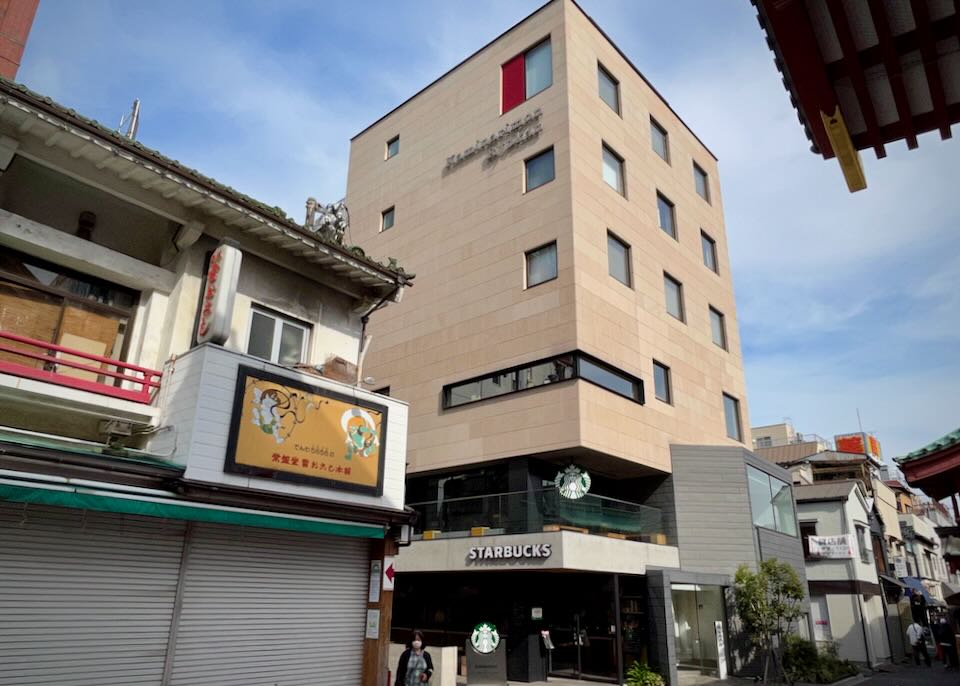
Asakusa’s Kaminarimon is one of the best ryokan (traditional inns) in Tokyo.
- Best Hotels in Asakusa
Asakusa Tobu • Hotel phone: +81 3-3843-0111
Asakusa View • Hotel phone: +81 570-003-235
Kaminarimon Ryokan • Hotel phone: +81 3-3844-1873
Ryokan Asakusa Shigetsu • Hotel phone: +81 3-3843-2345
Saunaland Asakusa • Hotel phone: +81 3-5830-7140- Best Cheap/Midrange Hotels
Super Hotel Asakusa • Hotel phone: +81 3-5806-9000
TOKYO-W-INN Asakusa • Hotel phone: +81 3-6802-8985- Best Hostels
&And Hostel Asakusa Kappabashi • Hotel phone: +81 3-5830-3887
Nui Hostel • Hotel phone: +81 3-6240-98545. Roppongi
Tokyo’s premier nightlife hub for Japanese, expats, and foreign visitors, Roppongi is a posh residential area and burgeoning high-rise district crammed with bars, stylish restaurants, izakayas (Japanese-style pubs), and dance clubs some 2.5 miles (4km) southwest of Tokyo Station. Over the last 20 years the neighborhood has evolved into a major commercial center: the Izumi Garden Tower and the Roppongi Hills high-rise complexes were completed in 2003, Tokyo Midtown (with the The Ritz-Carlton Hotel on top) was finished in 2006, the Ark Hills Sengokuyama Mori Tower topped out in 2012, and the Azabudai Hills complex to the east (including the Mori JP Tower, Japan’s tallest building) completed in 2023.
For visitors, the biggest draw is the trio of cultural attractions known as the Roppongi Art Triangle: the Mori Art Museum at Roppongi Hills (a complex that also features the Tokyo City View observation deck and tree-lined Keyakizaka-Avenue); the beautifully-designed National Art Center, with excellent temporary exhibitions displayed behind its rippling glass façade; and the Suntory Art Museum and stylish 21_21 Design Sight gallery (a collaboration between architect Andō Tadao and fashion designer Issey Miyake) both at Tokyo Midtown, the city’s third tallest high-rise and home to a posh shopping mall.
Just to the east of Roppongi lies the iconic Tokyo Tower (1,092ft/333m). Inspired by Paris’ Eiffel Tower and completed in 1958, its observation deck has been long surpassed by Skytree but remains popular. You’ll get the best shots of the tower from nearby Prince Shiba Park, though there’s sometimes a line to take the Instagram-popular image from the red stairs leading up from the underground parking lot nearby. Zojo-ji temple, north of the park, was meticulously rebuilt after being flattened in World War II and is the main headquarters of Jōdo-shū Buddhism. Its small cemetery contains several Tokugawa shoguns, and there’s a poignant “Garden of Unborn Children” honoring those lost at birth or from miscarriage, filled with “jizo” bodhisattva statues topped with red caps and pinwheels.
Roppongi is good for nightlife and is less of a “culture shock” if this is your first time in Japan/Asia, though despite its central location it’s not as well-connected as other neighborhoods and the choice of accommodation here is much smaller.
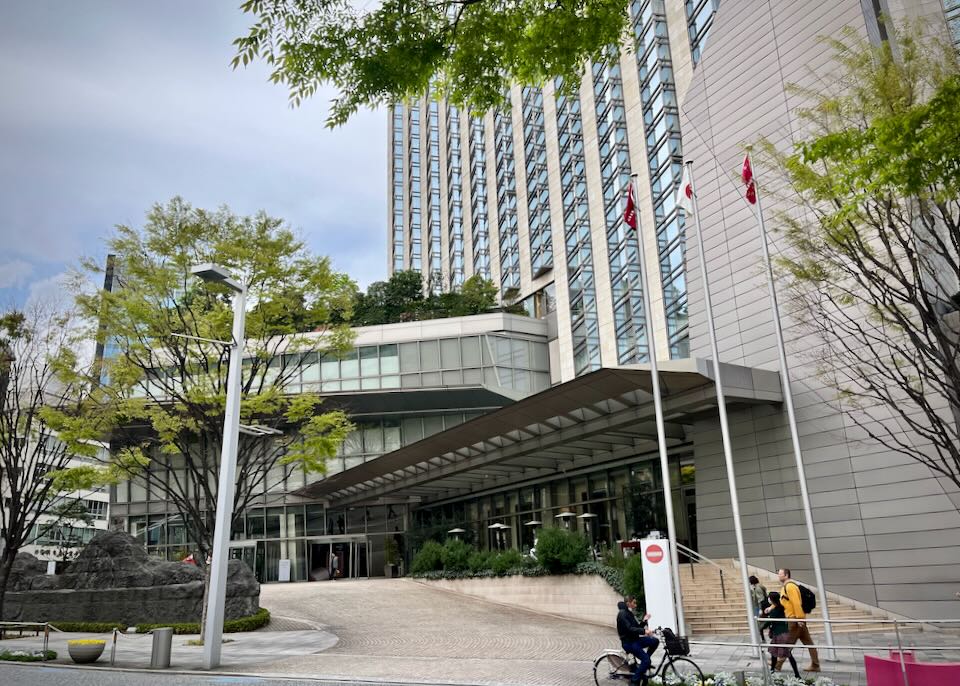
Entrance to the Grand Hyatt Tokyo.
- Best Hotels in Roppongi
Grand Hyatt • Hotel phone: +81 3-4333-1234
The Ritz-Carlton • Hotel phone: +81 3-3423-8000- Best Cheap/Midrange Hotels
APA Roppongi Ekimae • Hotel phone: +81 3-5413-6351
APA Roppongi Six • Hotel phone: +81 570-011-0016. Akihabara
A mile or so north from Tokyo Main Station (halfway to Ueno), “Akihabara Electric Town” has become Tokyo’s main hub for all things electronic, but also for “otaku” fans of cosplay, anime, and manga. It’s the original home, too, of one of Japan’s strangest fads: the “maid café,” where girls dressed as French maids serve drinks and snacks embellished with cutesy designs and even sing songs.
The gargantuan Yodobashi electronics store stands on the east side of Akihabara Station, while the main drag, Chuo-dōri, sits on the west side and is closed to vehicles on Sundays (usually 1–6pm). The Radio Kaikan complex is home to over 30 stores selling all sorts of electronics and anime, Super Potato is known for vintage video games consoles, and Mandarake sells rare and secondhand manga, figurines, DVDs and toys. There’s also a huge branch of discount store chain Don Quijote (open 24 hours), which offers duty free prices if you show your passport (go early in the morning to avoid the crowds). The 8th floor here is home to the AKB48 Theater, where girl “idol” group AKB480 perform shows. Popular Akihabara “maid cafés” include @Home Café, Maidreamin, and Magical Girl.
Akihabara is a primarily a shopping hub, but there are a couple of interesting temples here to check out. The Kanda Shrine was established way back in 730 AD, but was moved to its current location in 1616 (and like most Japanese temples, it’s been rebuilt many times). It’s very pretty, with a bright vermillion two-story main gate and elegant main hall. Nearby is the much quieter Yushima Seido, a large but restrained 17th-century Confucian temple (the grounds also contain the world’s largest statue of Confucius).
It can get very busy in Akihabara, but it’s not a bad place base yourself if you like to be in the thick of the action, and especially if you love contemporary Japanese culture. It’s also just a couple of stops from Tokyo Main Station on the JR Yamanote Line or JR Keihin-Tōhoku Line.
- Best Hotel in Akihabara
Nohga Hotel Akihabara • Hotel phone: +81 3-6206-0569- Best Cheap/Midrange Hotels
Best Western Fino Tokyo Akihabara • Hotel phone: +81 3-5816-3151
JR-East Hotel Mets Akihabara • Hotel phone: +81 3-5294-1011
Super Hotel Premier Akihabara • Hotel phone: +81 3-6671-9000- Best Hostel
&And Akihabara • Hotel phone: +81 3-3863-22007. Ueno
Just over a mile west of Asakusa, Ueno is home to another major train station (and Shinkansen stop), but is best known for the museums and attractions of Ueno Park. Ueno Park is Tokyo’s most famous cherry-blossom viewing site the spring, when you can expect huge crowds. Year-rounds, art fans could spend a couple of days or more perusing the galleries here, beginning with the priceless collections of Japanese art and artefacts in Tokyo National Museum. There’s also the Tokyo Metropolitan Art Museum, the National Museum of Western Art, the University Art Museum (at Tokyo University of the Arts), and Shitamachi Museum (dedicated to the history of Tokyo before World War II).
Ueno Park’s best bet for families is the massive National Museum of Nature and Science, though Ueno Zoo is also popular, and it’s possible to rent boats in summer on the picturesque Shinobazuno Pond. The Buddhist Shinobazunoike Benten-do temple is a popular spot from which to take in the blossoms and lotus flowers on and around the pond. There’s also one of Tokyo’s oldest temples, the Ueno Tōshō-gū, a Shinto shrine dedicated to Shogun Tokugawa Ieyasu, its main entry way lined with popular snacks stalls (the pagoda you can see near nearby once belonged to Kan’ei-ji Temple and is now part of the zoo). A short walk away is the Ameyoko shopping district, not quite the bargain street market it used to be, but still fun to explore. A mile or so northwest of Ueno Park, Nezu Shrine is justly renowned for its sprawling azalea gardens, which erupt in color in spring (Nezu Station is the closest subway stop).
- Best Hotels in Ueno
Mimaru Ueno East • Hotel phone: +81 3-5811-1677
Mimaru Ueno Inaricho • Hotel phone: +81 3-5246-4637
Minn Ueno • Hotel phone: +81 3-5817-8025
Nohga Ueno • Hotel phone: +81 3-5816-0211- Best Cheap/Midrange Hotels
APA Ueno Ekimae • Hotel phone: +81 5-7007-0311
Ryokan Sawanoya • Hotel phone: +81 3-3822-2251- Best Hostels
Hiromas Hostel • Hotel phone: +81 3-5830-35228. Akasaka
Southwest of Tokyo Station and Hibiya Park, and just north of Roppongi, Akasaka is an oftoverlooked neighborhood that once catered mostly to businessmen and bureaucrats. Today it’s an up-and-coming commercial center and posh residential district with lots of construction and a new swath of soaring skyscrapers, especially in the adjacent Toranomon Hills area.
There’s a small but hip nightlife zone at the heart of Akasaka (near Akasaka-Mitsuke Station) that includes a “Little Korea” of Korean restaurants and bars, plus some good hotels. Nearby are important government hubs, notably the National Diet Building and Akasaka Palace (one of the Emperor’s residences, usually off limits to visitors).
Akasaka is also home to two interesting Shinto temples: the 17th-century Hie Shrine sits on top of a small hill above Akasaka-Mitsuke Station (escalators run up the slope), with its photogenic “Thousand Toriis” pathway; the atmospheric Nogi Shrine is dedicated to war hero General Nogi Maresuke and his wife Nogi Shizuko, famous in Japan for committing suicide after the death of Emperor Meiji in 1912 (their simple wooden home is also preserved on site).
Akasaka is another centrally located neighborhood with easy access to the rest of Tokyo via 5 subway lines, which provide direct access to Asakusa, Ueno, Ginza, Shinjuku, and other top tourist destinations.
- Best Hotels in Akasaka
Capitol Hotel Tokyu • Hotel phone: +81 3-3503-0109
Centurion Classic Akasaka • Hotel phone: +81 3-5545-5571
New Otani Garden Tower • Hotel phone: +81 3-3265-1111
Prince Gallery Tokyo Kioicho • Hotel phone: +81 3-3234-1111- Best Cheap/Midrange Hotels
Mystays Premier Akasaka • Hotel phone: +81 3-6229-3280
Super Hotel Premier Akasaka • Hotel phone: +81 3-6843-9000
Via Inn Prime Akasaka • Hotel phone: +81 3-3505-54899. Harajuku
Harajuku is Tokyo’s teen shopping heaven, packed with stores selling cheap clothing and accessories, stalls offering sweet crepes, and inexpensive eateries, though parts of it – Cat Street, running south to Shibuya, and the Tadao Ando-designed Omotesandō Hills complex, for example – are a lot more sophisticated these days, home to global fashion brands, larger international chain stores and high-end luxury boutiques. The 1980s was really Harajuku’s heyday (between 1977 and 1998 a large part of the neighborhood was closed to car traffic on Sundays and groups of dancing costumed teens were a common sight), though you might still see Rockabillies in Yoyogi Park on weekends.
Harajuku’s traditional epicenter is Takeshita-dōri, a narrow pedestrian lane that’s often a human traffic jam, and still a major teenage magnet (though fake brands are no longer sold here). Omotesandō-dōri runs southeast, becoming increasingly upscale as it enters Aoyama, while fashionable Cat Street runs off it to the north through the Ura-Harajuku (Harajuku backstreets). Other highlights include the tranquil Togo Shrine, the Shinto temple honoring Tōgō Heihachirō, a famed 19th–20th-century Japanese Navy admiral; the Ota Memorial Museum of Art (known for historic woodblock prints), the Laforet Harajuku mall, and the Design Festa Gallery, an artists’ co-op that resembles a mini version of Paris’ Pompidou Center. One of Tokyo’s top attractions lies just to the northwest of Harajuku: the Meji Shrine, dedicated toEmperor Meiji (1868–1912),is a beautiful complex tucked away in the heart of wooded grounds that form part of Yoyogi Park.
There are no hotels in Harajuku, but Shibuya is only one stop away.
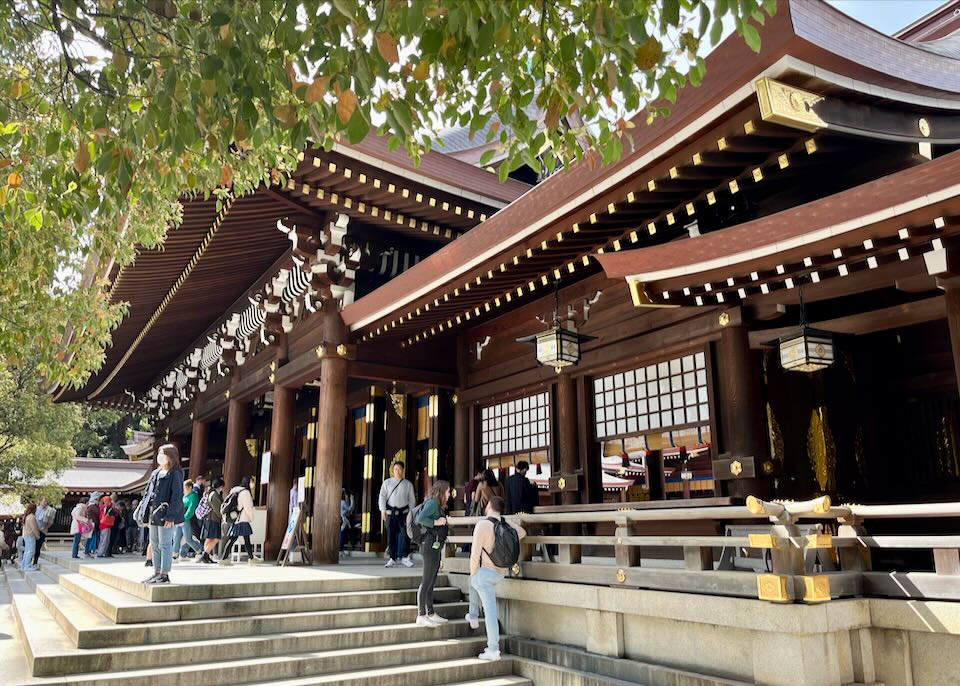
The Meji Shrine near Harajuku.
10. Tokyo Bay (including Odaiba)
Wide open spaces and plenty of family-friendly attractions make the Tokyo Bay area a popular destination for visitors. Newly-constructed (this is the least traditional part of Tokyo), a series of manmade islands feature shopping malls, museums, and entertainment centers, with wider avenues and a lot more space than the rest of the city.
Toyosu has been redeveloped since the 1990s and is best known for the huge Toyosu Market complex, which replaced the famous Tsukiji fish market in 2018 (there are now two buildings for seafood and one for fruits and vegetables, with lots of onsite restaurants). Aim to arrive at 6am if you want to view the tuna auctions from the viewing deck (an advance reservation is required to see the auctions from a closer platform). All market halls close by 3pm. The other main attraction here is teamLab Planets Tokyo, an immersive “Instagram” museum that features 4 large-scale artwork spaces and 2 gardens.
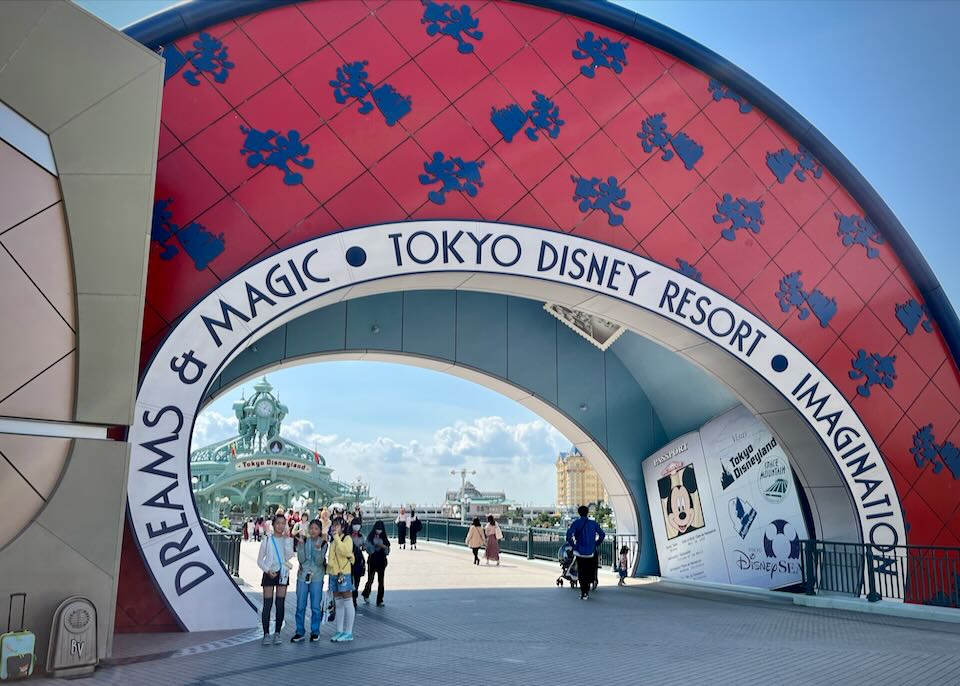
Tokyo Disney is one of many family-friendly attractions on Tokyo Bay.
Neighboring Ariake island is home of the Tokyo Big Sight international exhibition center (with its distinctive inverted pyramid Conference Tower). There’s also the family-oriented Small Worlds Tokyo “miniature theme park” and science exhibits at the Panasonic Center Tokyo.
On Odaiba island itself there’s the futuristic Fuji TV Building and Telecom Center (both featuring observation decks), the Gundam Base toy store with its massive Gundam statue, the Decks indoor mall (with Tokyo Joypolis game center, Legoland Discovery Center, and Madam Tussauds Tokyo), the hands-on and bilingual National Museum of Emerging Science and Innovation (aka Miraikan), and the Museum of Maritime Science, which looks like a giant cruise ship (note that the main building is closed indefinitely; the museum annex is open for free and includes access to the Antarctic ice breaker “Soya”). There’s even a small replica of the Statue of Liberty and a beach, with views of the Rainbow Bridge across the harbor. More entertainment lies a few miles east (accessible via Keiyō Line trains from Tokyo Station), where seaside Kasai-Rinkai Park contains the giant Diamond and Flower Ferris Wheel and Tokyo Sea Life Park aquarium. One stop away lies the area’s biggest attraction, Tokyo Disneyland, the first Disney park to open outside the US when it debuted in 1983.
Toyosu Station is accessible via Yurakucho Line subway; it’s also one end of the Yurikamome monorail line, which runs across the bay to Shimbashi via Odaiba and Ariake. You’ll find some good hotel deals here, and depending on where you stay it’s only a few stops to Tokyo Station – though it tends to be much quieter at night. The hotels also tend to be newer and are located near the water, which is rare in Tokyo. You’ll get the best views from Mitsui Garden Hotel (it’s worth going up for a drink or meal to have a look if you’re not a guest).
Disneyland has its own spread of hotels and resorts, which are obviously convenient for the theme park but not ideal for exploring the city. Hilton Tokyo Bay is a good independent choice just outside the Disneyland perimeter.
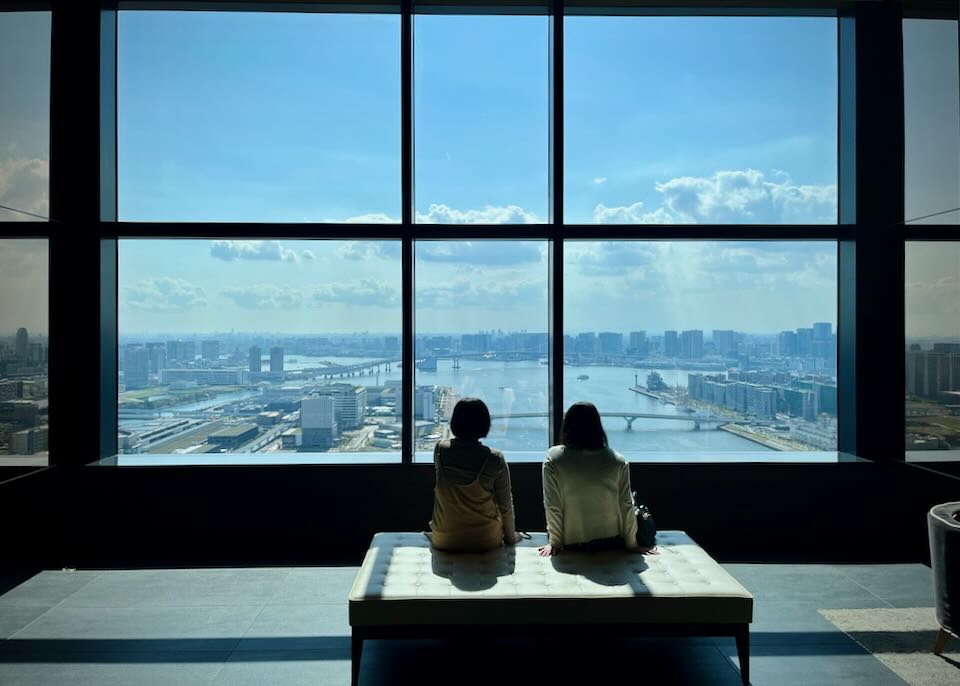
Incredible views from Mitsui Garden Hotel.
- Best Hotels in Tokyo Bay
Grand Nikko Tokyo Daiba • Hotel phone: +81 3-5500-6711
Hilton Tokyo Odaiba • Hotel phone: +81 3-5500-5500
Mitsui Garden Hotel Toyosu Premier • Hotel phone: +81 3-3534-3931
Tokyo Bay Shiomi Prince • Hotel phone: +81 3-6660-3222- Best Cheap/Midrange Hotels
Monday Premium TOYOSU • Hotel phone: +81 3-3532-8141
Sotetsu Grand Fresa Tokyo-Bay Ariake • Hotel phone: +81 3-6899-2030More Tokyo Neighborhoods
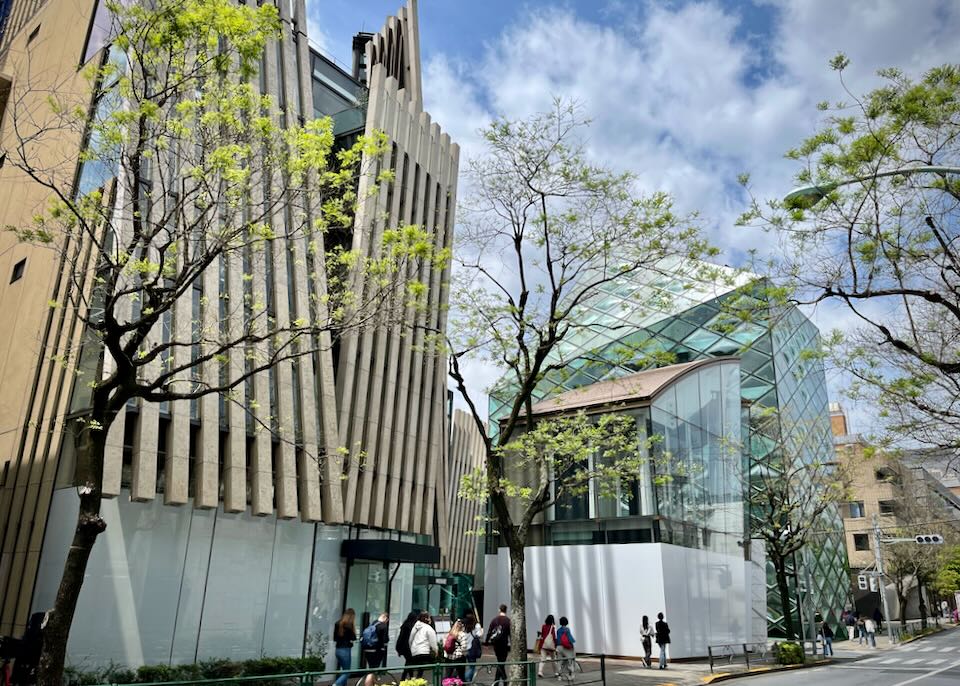
Designer boutiques in Aoyama.
We’ve covered our favorite neighborhoods to visit and stay in more detail above, but with more time these places are also worth checking out:
- Aoyama/Omotesandō: This wealthy neighborhood just east of Harajuku can be fun to explore, containing upscale eateries, cafes, and international designer boutiques, centered mostly around Aoyama and Omotesandō avenues. Highlights include the stylish Nezu Art Museum (with pre-modern Japanese and East Asian art plus a beautiful garden), and the smaller but quirky Taro Okamoto Memorial Museum (home and studio of Japan’s most famous 20th-century abstract artist). You’ll also find high-quality arts and crafts for sale at Japan Traditional Crafts Aoyama Square. History buffs might want to stroll around Aoyama Cemetery, with a small but poignant Foreign Section (resting place of several early American and European expats and missionaries), and a memorial to Hachikō (the faithful dog that waited at Shibuya Station for 9 years after its owner’s death). Our favorite hotel here is Tokyu Stay Aoyama Premier.
- Ryōgoku: Historic neighborhood on the east bank of the Sumida River, best known for being the home of Kokugikan National Sumo Arena (three tournaments are held here annually). Nearby, the Edo-Tokyo Museum is the city’s best history museum (note that it’s closed until 2027 for major renovations), the Sumida Hokusai Museum celebrates the famous painter of Thirty-Six Views of Mount Fuji (including the iconic Great Wave off Kanagawa), and the Japanese Sword Museum displays a rare collection of ancient Japanese weaponry. Ryōgoku Station is on the JR Sobu and Toei Oedo lines (about 15 minutes from Tokyo Station). The best hotel here is the excellent Gate Hotel Ryogoku (APA Hotel & Resort Ryogoku Eki Tower is a good, cheaper alternative).
- Sengaku-ji (in Takanawa): This 17th-century Sōtō Buddhist temple is one of the most famous in Tokyo thanks to the story of the 47 Ronin, buried here in 1702 and immortalized in Japanese fiction thereafter. The 47 are respected in Japan for avenging the death of their master Asano Naganori – they killed the corrupt official who had forced Naganori to commit suicide, before calmly committing suicide themselves shortly after. You can visit the temple and grave sites for free, but there’s a small charge for the two on-site museums. The Toei Asakusa subway line and the Keikyū Main Line serve Sengakuji Station (around 20 minutes south from Tokyo Station). The best hotels near here are Grand Prince Hotel Takanawa, Prince Sakura Tower Tokyo, and Tokyu Stay Takanawa.
Sengaku-ji Sōtō Buddhist temple.
- Ghibli Museum (in Mitaka): Must-see museum for fans of director Hayao Miyazaki and Studio Ghibli, though it’s a bit of trek from central Tokyo (40 minutes by train to Kichijōji Station) and it’s essential to book your visit in advance online – you can’t just show up, even to visit the museum store. There are more conveniently-located Ghibli stores (aka Donguri Republic) below Tokyo Station (in “Character Street” on Basement 1) and in the Solomachi mall at Tokyo Skytree. The best hotel near the Ghibli Museum is Kichijoji Excel.
- Tokyo Dome City (in Suidōbashi): Families might want to take a day to let off some steam at this massive entertainment complex, with the theme park section (Tokyo Dome City Attractions) featuring thrill rides such as the “Thunder Dolphin”, a high-speed roller coaster, and the Big O Ferris wheel. There’s also an indoor kids’playground, a bowling center, roller skate rink and the Japanese Baseball Hall of Fame – the Dome itself (aka the “Big Egg”) is Tokyo’s major baseball venue, the home field of the Yomiuri Giants. You can stay next door at the Tokyo Dome Hotel or at the sequence SUIDOBASHI, near Suidōbashi Station.
- Given how easy it is to get into the city, there’s not much point in staying near either airport; but if you do need to stay at Narita for an early flight, the most conveniently located hotel is Nine Hours capsule hotel, with Hotel Nikko and ANA Crowne Plaza offering a little more comfort just outside the airport perimeter.
Tokyo Travel Tips
- Tokyo is served by Narita International Airport and Haneda Airport (aka Tokyo International Airport). While Haneda is closer to the city, both airports have excellent transportation links. The Narita Express runs every 30 minutes or so from stations at Terminal 1 and Terminal 2/3 to Tokyo Station (53 minutes), Shibuya (1hr 15min), and Shinjuku (1hr 20min). Tickets start at ¥3,070 (around US$22). From Haneda, you can hop on the monorail to Hamamatsucho Station (15 min) and transfer to the Yamanote Line to be at Tokyo Station within half an hour, Shibuya in around 40 minutes, and Shinjuku in 50 minutes (there’s unfortunately no non-stop service from Haneda to these stations). Taxis from the airports are expensive. Fares are usually fixed; from Haneda to Shinjuku ¥8,300; ¥7,800 to Shibuya; and ¥6,900 to Tokyo Station, plus tolls and late-night fees may apply. From Narita it will cost at least ¥23,000 to Tokyo Station and ¥25,000 to Shibuya and Shinjuku.
- Though more people speak English in Tokyo than ever before, and most hotels and some shops and restaurants will have English speakers on hand, don’t assume everyone will understand you. The staff at the main ticket office at Tokyo Station can communicate in English, menus usually have photos you can point at, and signage in the station (and around the city) is translated into English, but try to learn a few words and numbers in Japanese before you go, if possible.
- The Tokyo Pass (offering free entry to over 35 museums and attractions) can be a good investment, but only if you intend to visit a lot of sights. Their digital pass (you must download it to your smartphone and have roaming/wi-fi to use it) comes in 2, 3, or 5-day versions, with an option to add unlimited subway travel. Prices start at ¥6,800 (around US$50) for 2 days, but it’s usually better value to buy the 3-day (¥8,000) or 5-day card (¥10,300). You’ll need to visit at least 7 of the higher-priced attractions over two days to break even (like Tokyo National Museum, Mori Art Museum, National Museum of Modern Art). Alternatively, the Grutto Pass is valid for two months from the day you first use it and includes admission and discount coupons for 101 museums in the Tokyo area, starting at just ¥2,500 (around US$18–20); buy it from participating museums. It can be a great deal, but check the list on the website, as some museums only offer a discount, not free entry.
- The city operates two very helpful Tokyo Tourist Information Centers in Shinjuku (at the Tokyo Metropolitan Government (Main Building No.1) and at Shinjuku Expressway Bus Terminal, plus desks at the Keisei Ueno Station (in front of the ticket gate) and at Haneda Airport. The main Japan National Tourism Information Center is in the Shin-Tokyo Building (1st floor) in Marunouchi.
- Cycling is popular in Tokyo, though the size of the city means you must be pretty fit and committed to see the whole place on a bike. CycleTrip is a popular rental outfit conveniently located in Akihabara, while Docomo operates Tokyo’s bike share service.
- Free wi-fi is available at Narita and Haneda airports, and there are handy free wi-fi hotspots throughout the city (look for “FREE_Wi-Fi_and_TOKYO”). Most subway stations also offer free wi-fi (“Metro_Free_Wi-Fi”), and you’ll also find hotspots operated by various city districts (“Chuo_City_Free_Wi-Fi” or “Shinjuku_Free_Wi-Fi” for example). You’ll usually have to register your email to use them.
- Escalator etiquette: Make sure you stand on the left when using escalators in Tokyo (oddly, its conventional to stand on the right in Osaka) – use the right side if you intend to walk up and down only.
Narita Airport – Where To Stay
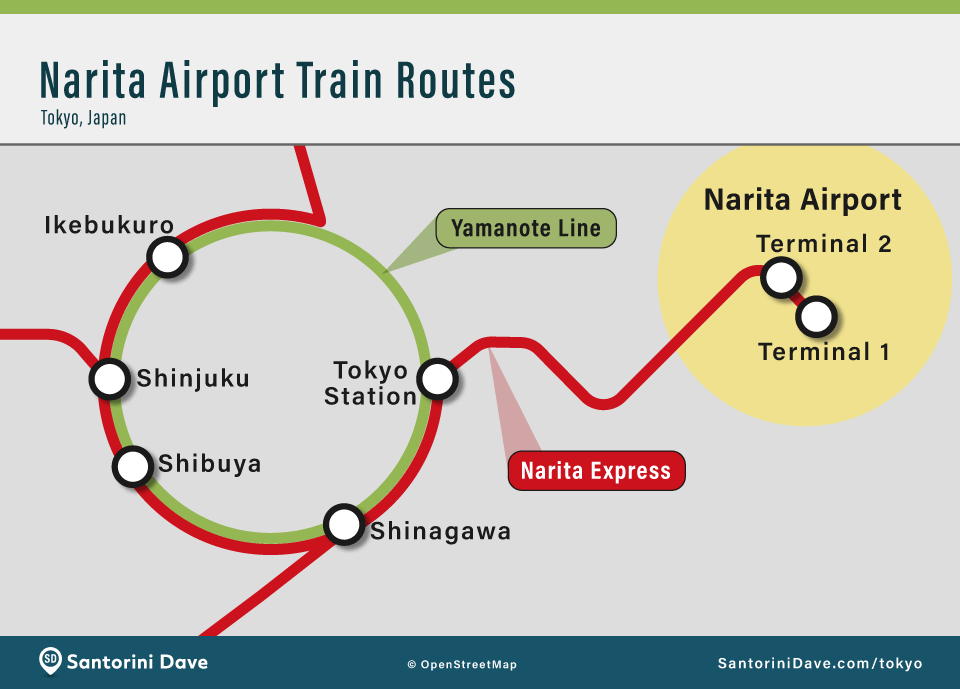
The best way to get from Narita Airport to central Tokyo is with the Narita Express. It stops at 5 stations in central Tokyo: Tokyo Station, Shibuya, Shinjuku, Ikebukuro, and Shinagawa. Travel time ranges from 60 to 90 minutes depending on station and time of day. If traveling to Ueno Station the Keisei Skyliner offers a direct route and takes 41 minutes.
- Good hotels near Tokyo Station: Tokyo Station Hotel • Four Seasons Marunouchi • Shangri-La • Courtyard by Marriott Tokyo Station
- Good hotel near Shibuya Station: Shibuya Excel Hotel Tokyu
- Good hotel near Shinjuku Station: Sunroute Plaza Shinjuku
- Good hotel near Ikebukuro Station: Hotel Metropolitan
- Good hotel near Shinagawa Station: Shinagawa Prince
Haneda Airport – Where To Stay
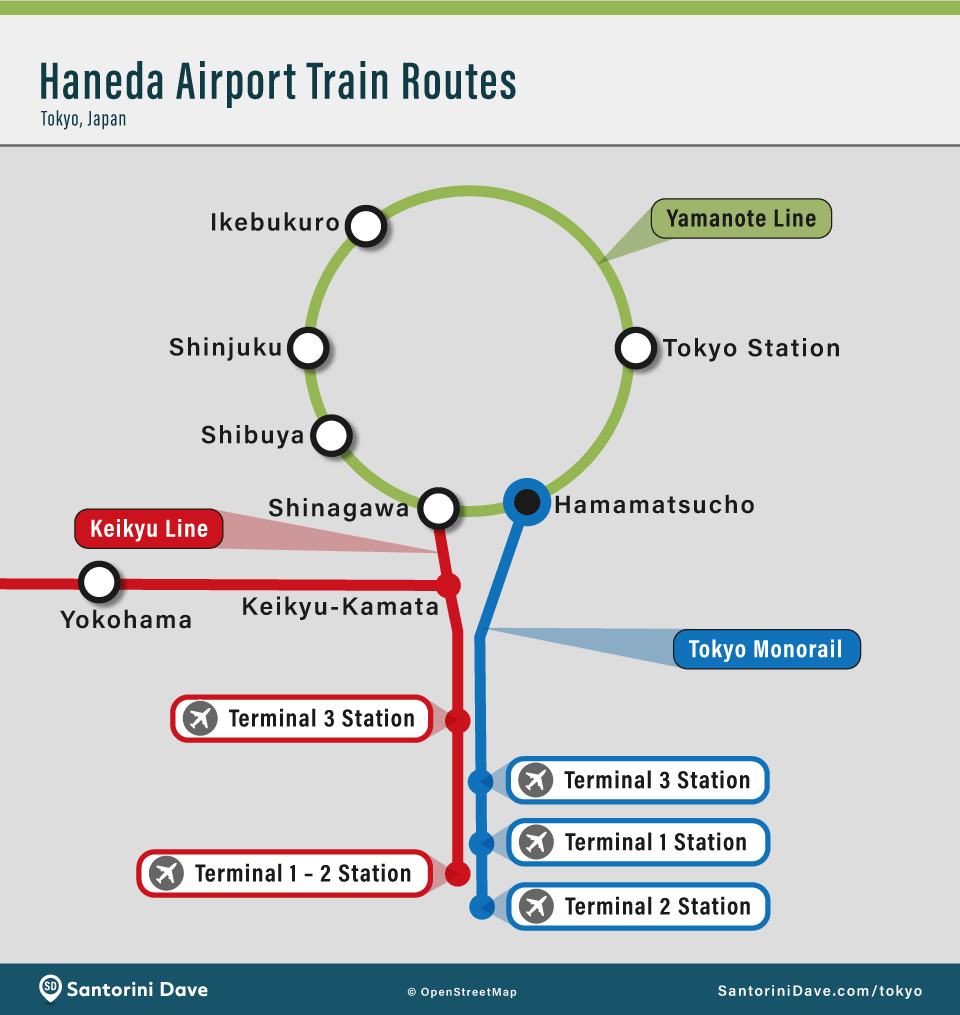
The best way to get from Haneda Airport to central Tokyo is with the Airport Limited Express to Shinagawa Station or with the Haneda Express to the Hamamatsucho Monorail Station. Both routes take 13 minutes.
- Good hotel near Shinagawa Station: Shinagawa Prince
- Good hotel near Hamamatsucho Monorail Station: Meitetsu Inn Hamamatsucho
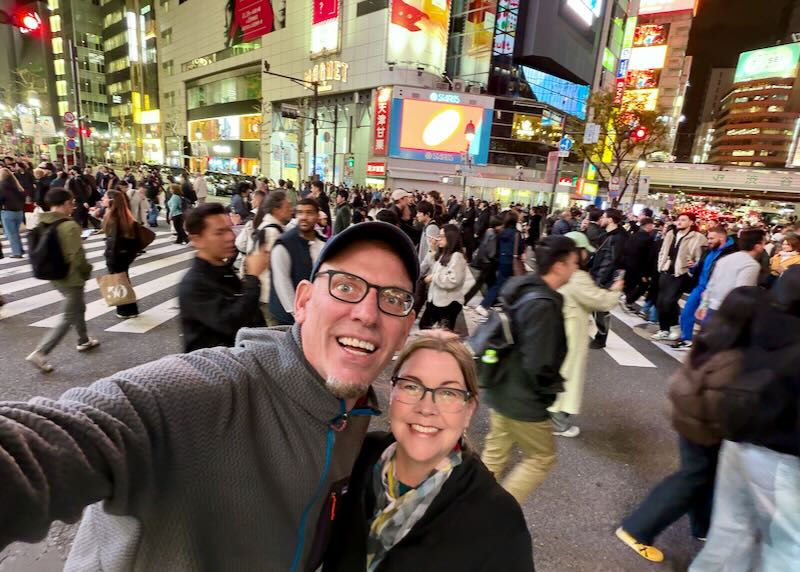
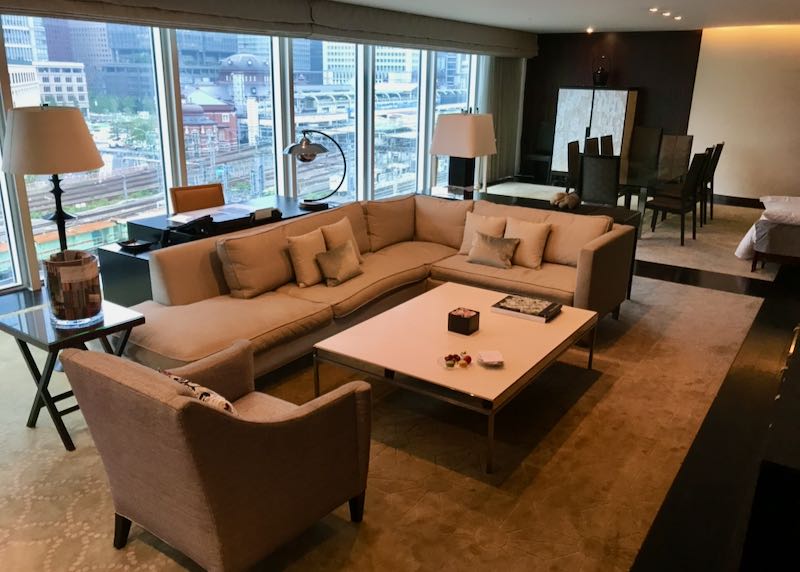
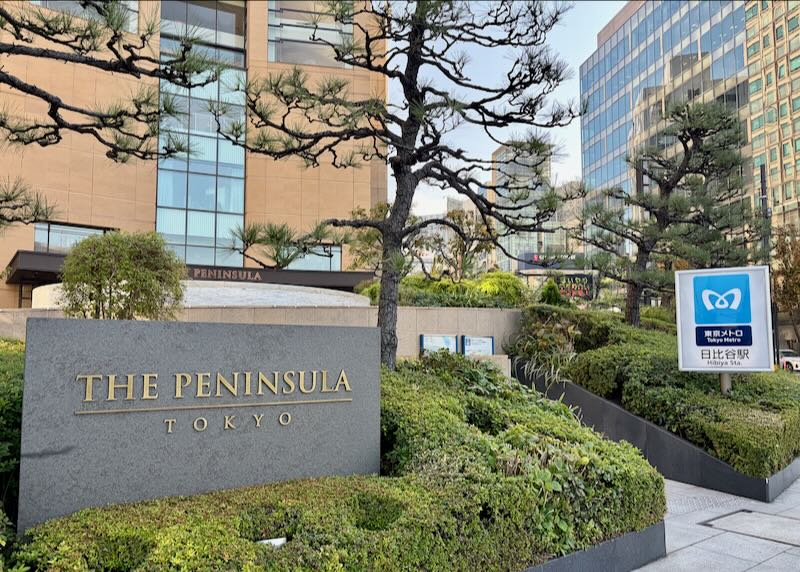
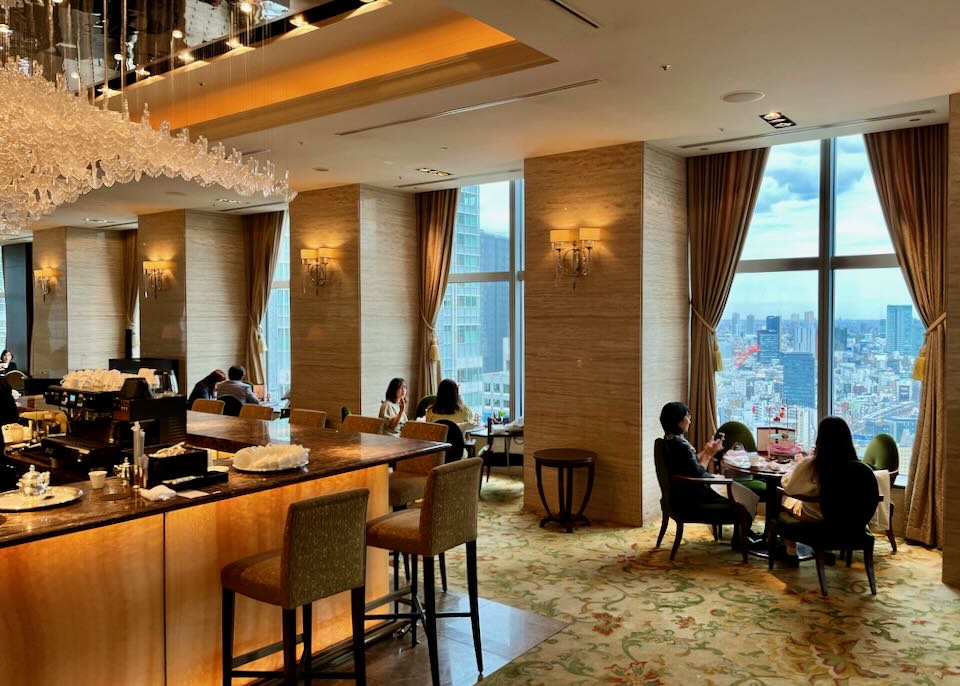
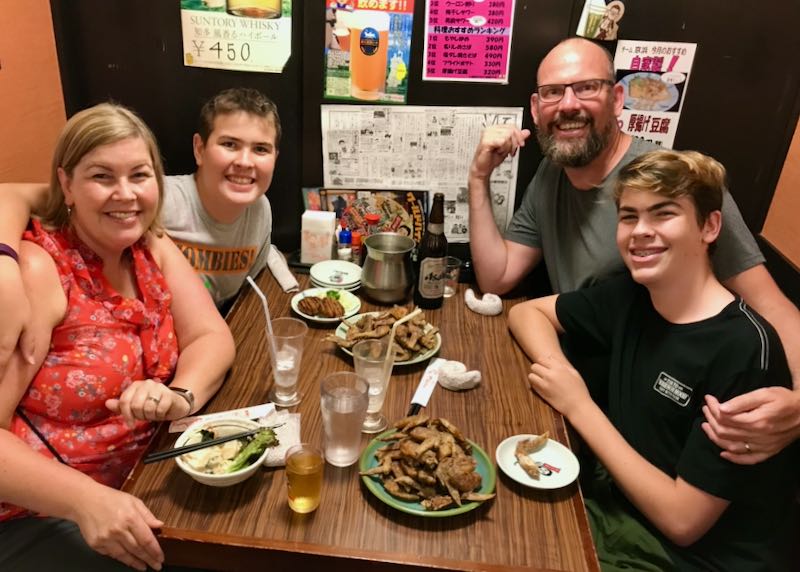
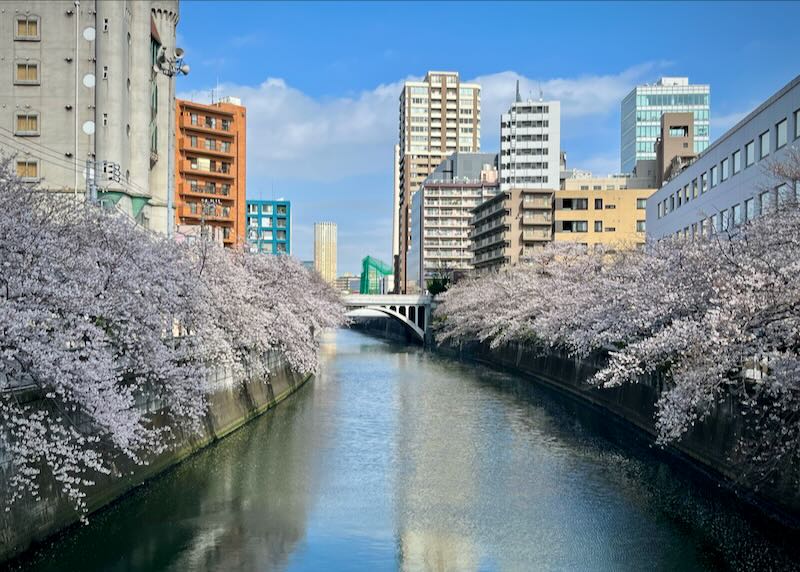
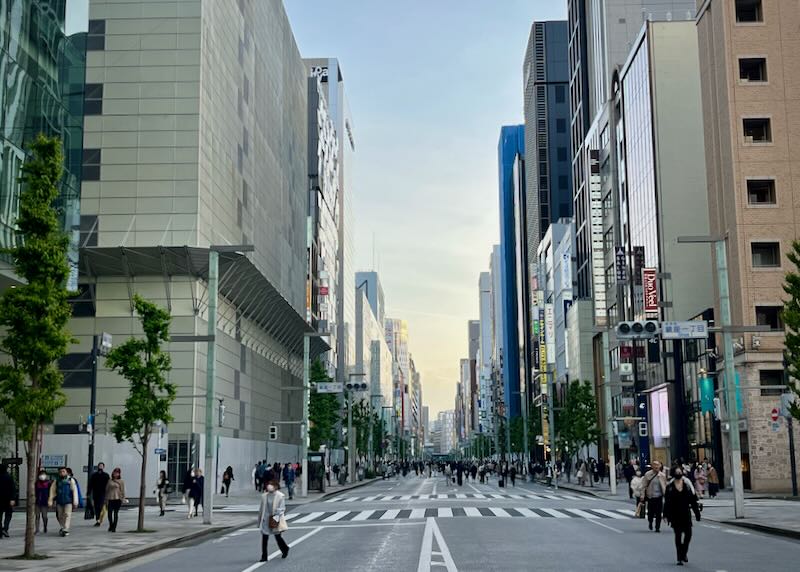

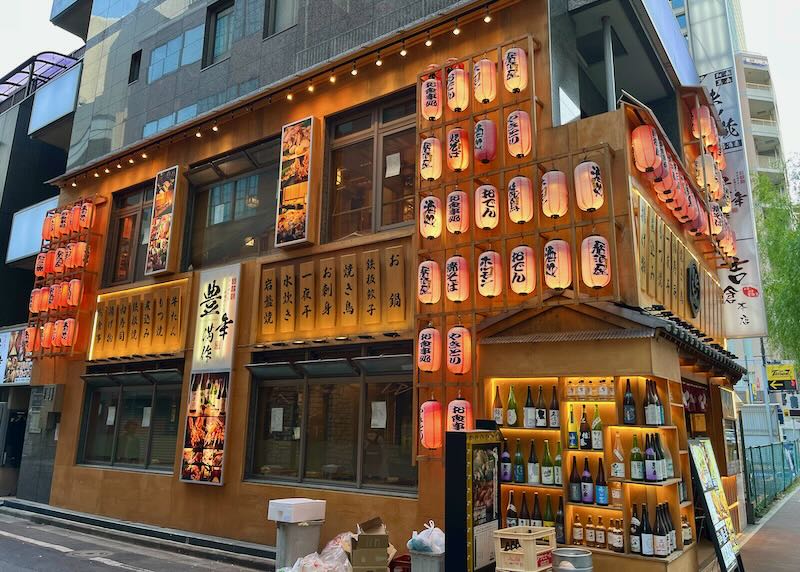
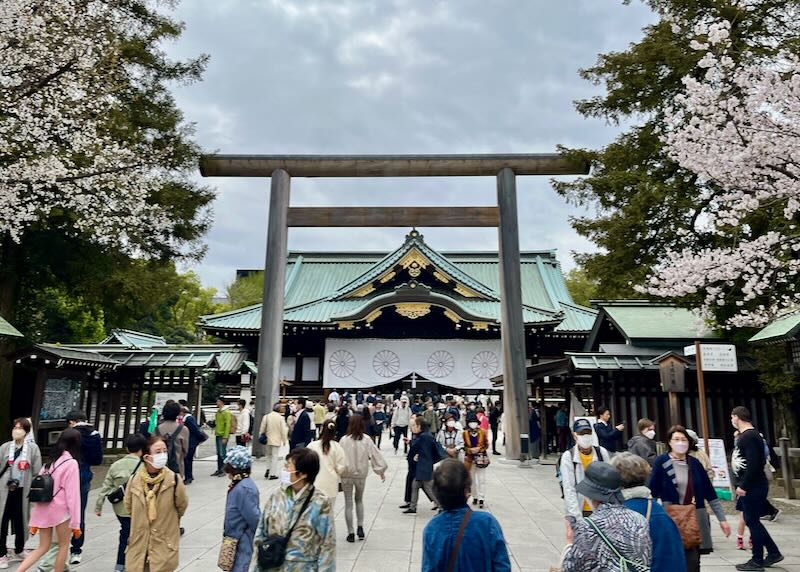
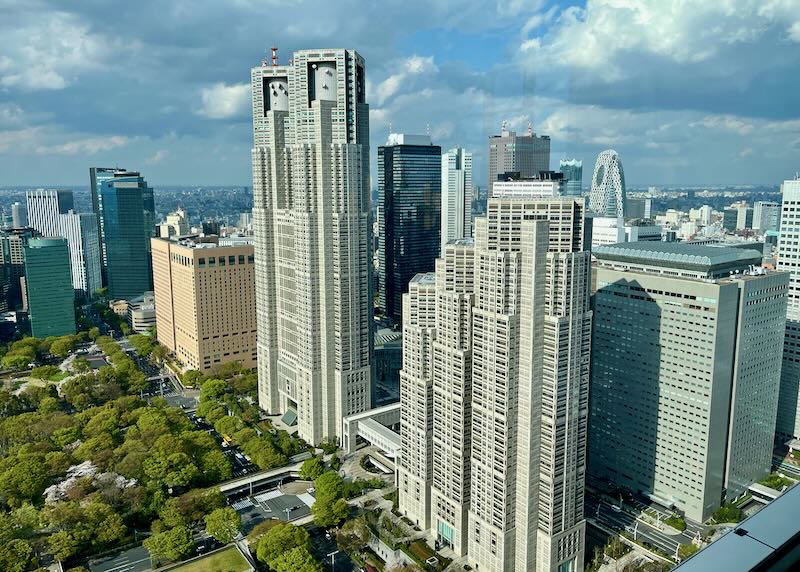

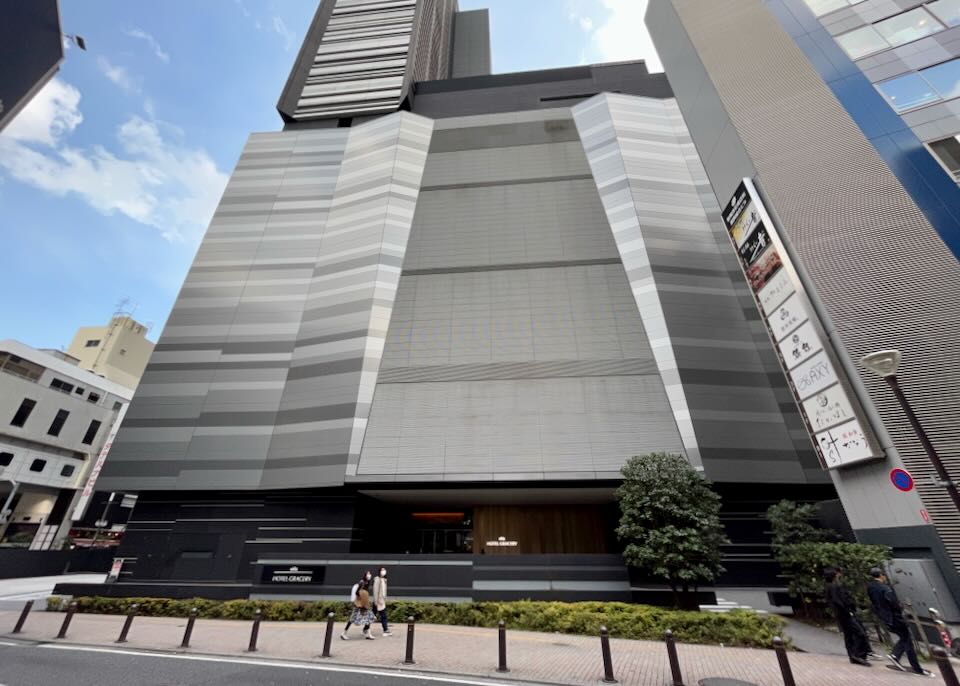
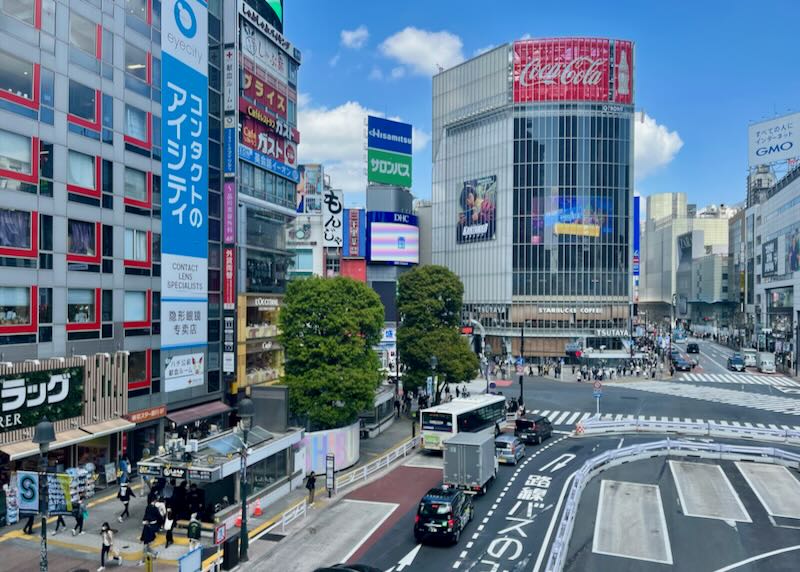

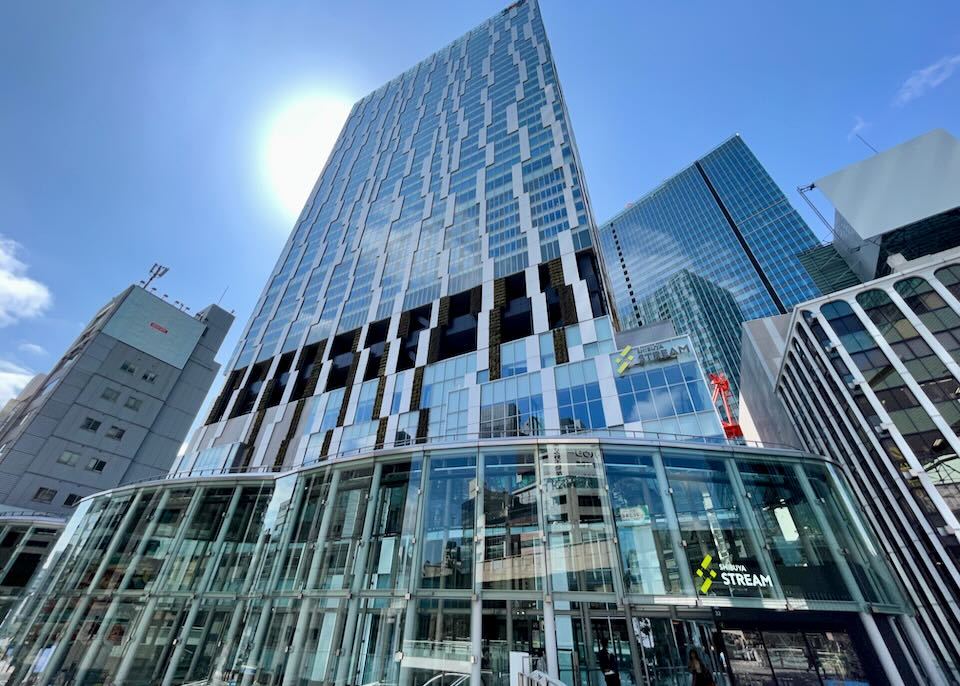


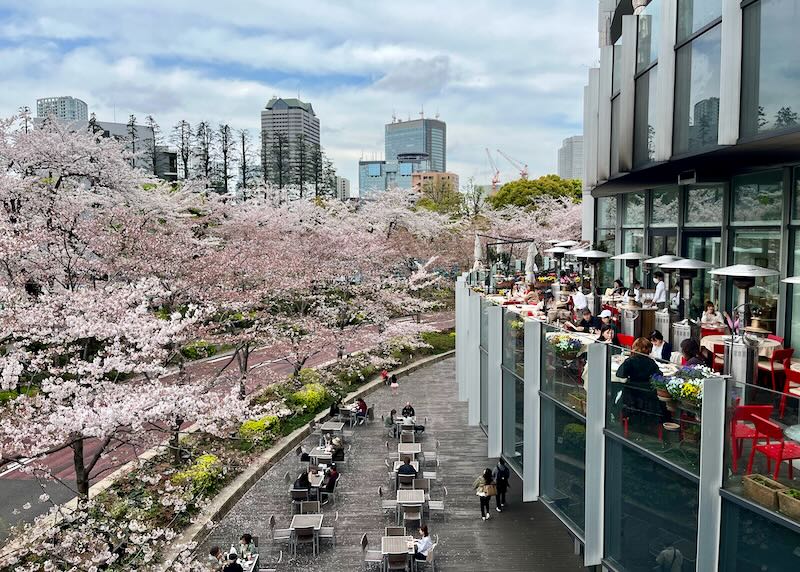

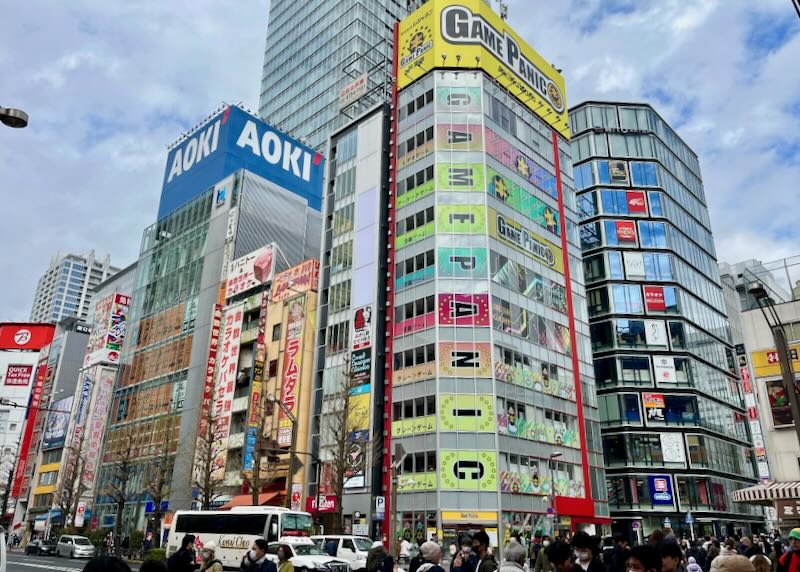

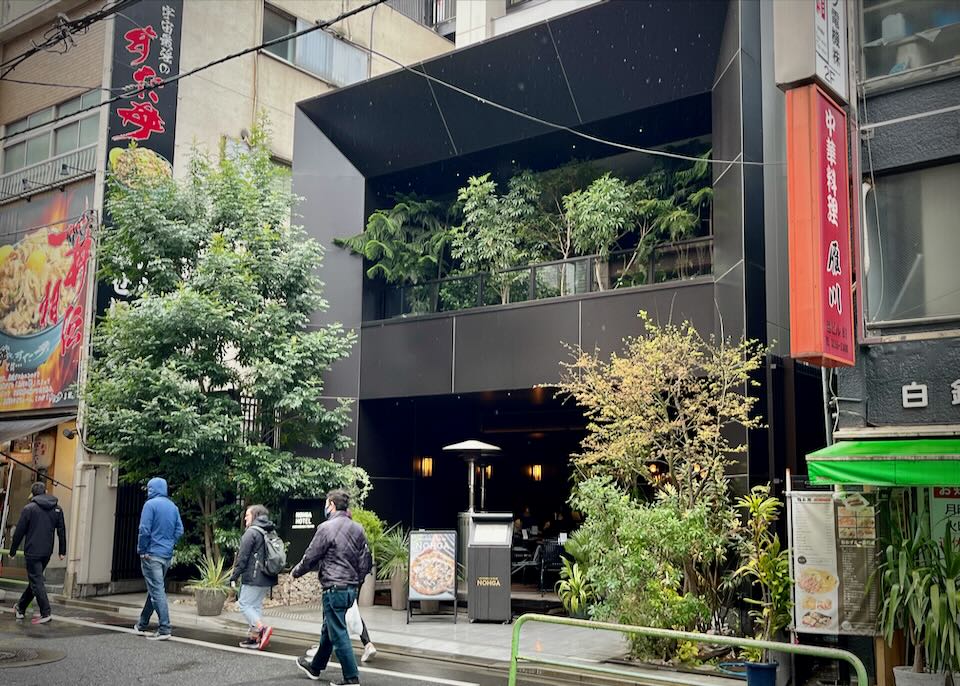
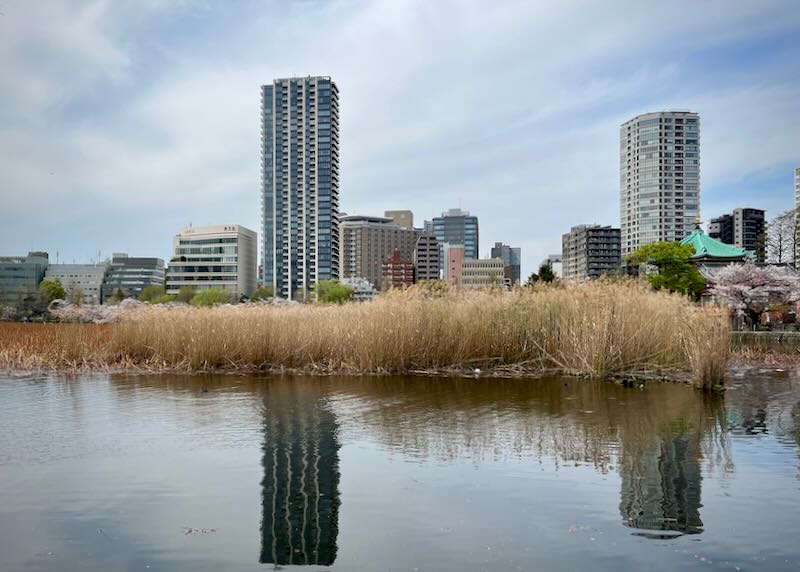

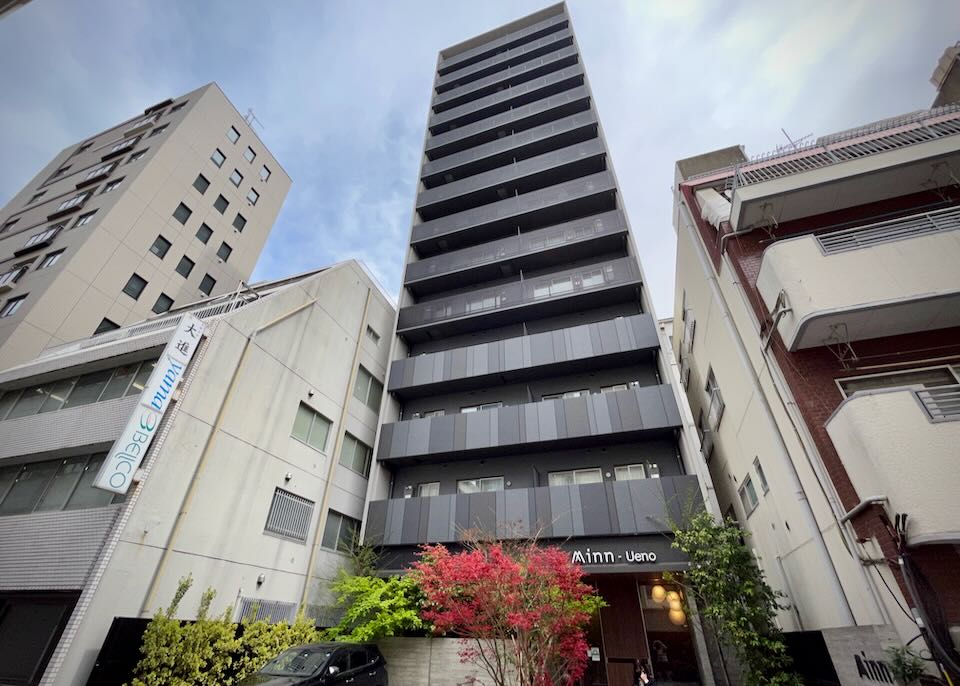
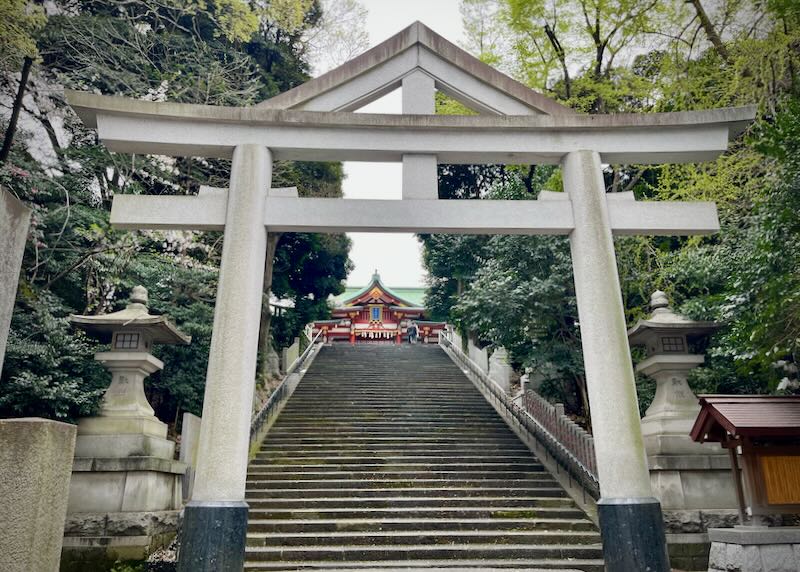

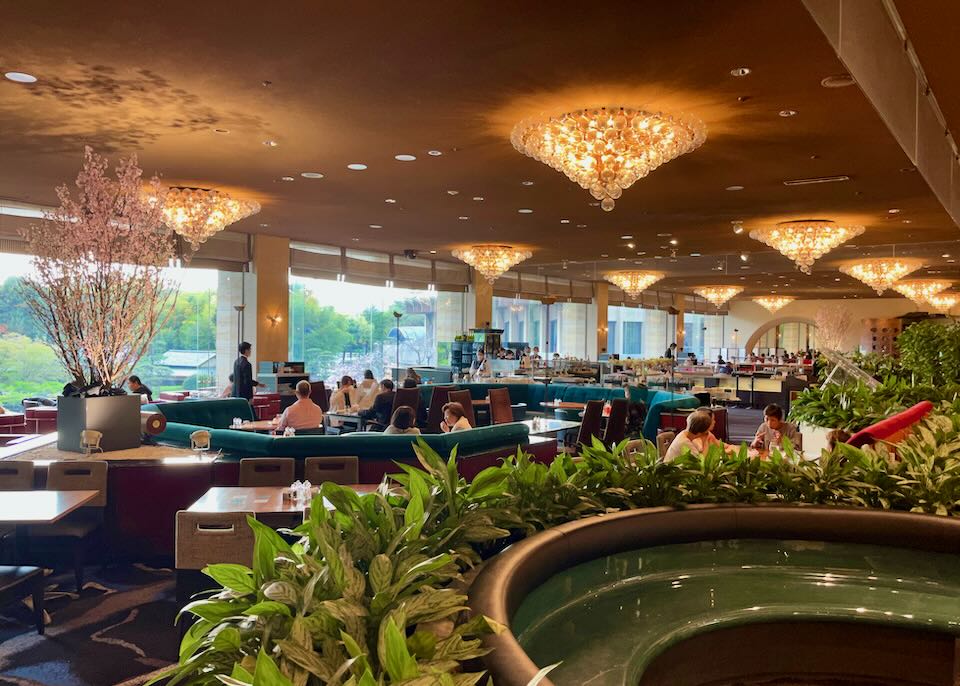
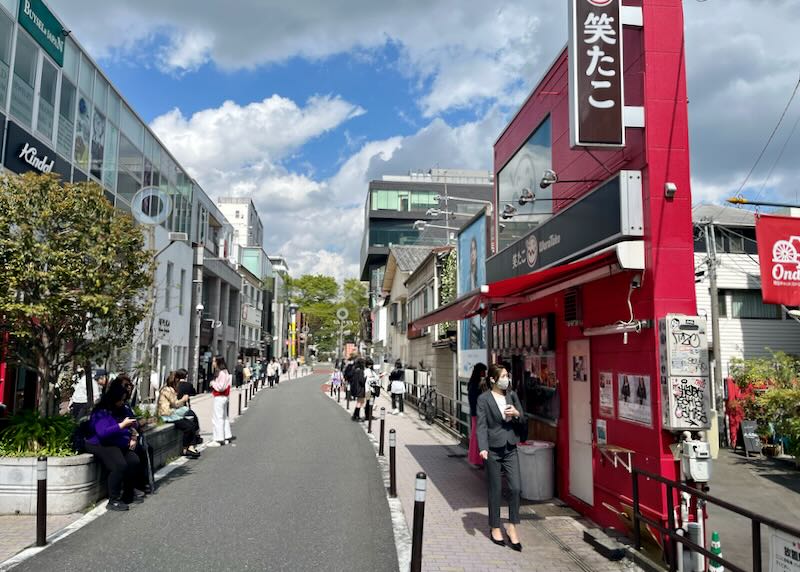




 Santorini Dave was started in 2011 when I posted a short guide to visiting Santorini with kids. Now, my site publishes regularly updated guides to
Santorini Dave was started in 2011 when I posted a short guide to visiting Santorini with kids. Now, my site publishes regularly updated guides to
Glad to see you enjoyed the Four Seasons hotel.
I checked the price. Over $12000 for a week in the suite.
What this clearly means is that if I reserve in any of your recommendations I’m subsidizing at great expense your lifestyle.
So your list is useful for exposing hotels that will charge me (a ton) more to give you a free stay. And therefore to avoid.
William Rogers
Hi William. I’ve stayed at the Four Seasons in Tokyo twice. I did not get a free stay either time and actually hotel staff didn’t even know I had a blog. (I rarely tell hotels about my blog. Not for any grand moral reason, but more it’s just awkward and not rewarding for me. Yes, I could get a discount but it takes a lot of emailing and self-promotion and I’d rather devote that time and energy to my blog and not towards getting free stays.)
But $12,000/week is very expensive. I certainly didn’t pay anything close to that. Tokyo hotel prices are given to huge spikes and drops due to domestic demand. Even exam schedules (when students come to Tokyo for entrance exams) can send prices skyrocketing. Book early and have a good look around different neighborhoods. Good luck.
Hi, my son (19) is going to be living in Tokyo for 9 months (Sept-May) as an exchange student at Aoyama Gakuin and we’re searching for an apartment/housing. Any suggestions on neighborhood or complex? Maybe where other AG students reside? We’re looking on Airbnb but not sure if that’s best approach. Looking for nice safe area, young college vibe, easy access to the university. We were thinking maybe Shibuya but your description of Meguro sounds interesting. Is it too far out?
Appreciate any insights you have. I’m a bit overwhelmed!
Beth Vukmaravich
I would focus less on physical distance and more on what neighborhoods have a direct subway line from Omote-Sando or Shibuya Station – both an easy walk from Aoyama Gakuin. The number of stops matters a little (you don’t want a 20-stop route twice a day) but as long as it’s a direct line it’s pretty easy. It’s when you have to take multiple trains that it can start to wear on you a bit. There are so many great neighborhoods in Tokyo and very few that aren’t incredibly safe by western standards. Starting with an Airbnb for a few weeks seems like a great idea. Then find something a little more long term as you get your bearings.
Hi Dave,
We arrive at 8pm and want to stay at airport hotel to recover from the long flight. We have a 3yr old toddler traveling with us. Do you recommend we return to the airport the next morning to make the trip into Tokyo on the NEX? Or just head into the city the night we arrive? (At some point we will be staying in Akihabara.)
Thank you!
It’s difficult to guess how you’ll feel after you land. It’s possible everyone is wide awake and you get into your airport-hotel room and lie there awake for 4 hours – and you’ll be thinking the whole time we should have went straight into the city. It’s also possible that you’re truly exhausted and the ride into Tokyo is a long hour of sitting on a train. (And then, depending on where you’re staying, another subway ride.) My personal preference is to get into the city and get settled. Wake up the next morning and be ready to explore the city, not pack the bags and get on another train. But there’s no right answer. If budget allows both the Shangri La and the Four Seasons are a short walk (almost entirely indoors) from the NEX train in Tokyo Station. For a fee, the Four Seasons will have someone meet you at the train to guide you through Tokyo Station to the hotel.
Hi,
I am coming to Japan in early November. Will be largely staying in Tokyo and then taking one day trips to near by places. Can you please suggest a good apartment to stay (not so expensive) for a family of 4.
Thank you and your website and details for Tokyo are amazing.
Keep up the good work.
I am not a huge fan for Airbnb in Japan (lots of reports from friends and readers of low quality accommodations) but if you’re searching for an inexpensive apartment then that’s where to look.
We have 4 nights in Tokyo and would like to stay in one hotel (no switching) and be able to enjoy nightlife and good food. This is our first time in Tokyo. We arrive from Narita and leave by Shinkansen to Kyoto where we do a guided tour. What neighborhoods are best for a first timer in Tokyo? Do most Tokyo bars serve food? When are bars busiest? We are there from Wednesday to Sunday. Thanks!!!
There’s no reason to switch hotels, which takes precious time from your vacation, especially in Tokyo where public transportation is so efficient. You didn’t mention a budget (whether you were looking for reasonable accommodations or are looking for a splurge), but Shibuya might be a good choice. It’s on the Yamanote Line, which directly connects with both Tokyo and Shinagawa stations for quick access from Narita and the Shinkansen bullet train onward to Kyoto (Tokyo and Shinagawa stations themselves do not have as wide a range of accommodations nor the nightlife of Shibuya). It also offers quick access to many other areas via subway. In addition, it has many hotels from various price ranges. Finally, it has a good nightlife scene just steps from the station, as well as numerous bars, restaurants and shopping throughout the area. And yes, most bars serve food. Japanese-styled pubs, called an izakaya, offer mostly Japanese food, while Irish pubs (like Dublin’s in Shibuya) generally offer Western pub grub.